BEHIND THE SCENES OF THE CLOTHES YOU WEAR






BEHIND THE SCENES OF THE CLOTHES YOU WEAR





PAGE 6 TO 9
THE EDITORIAL TEAM

The team behind SSEAMS and welcome letter from the Editors.
PAGE 11 >
The home of SSEAMS magazine is Scotland, UK. The year is 2022, and these are our local heroes..
PAGE 12 TO 16
JONNY MACKINNON
Introducing Scottish Fashion & Textile Designer

PAGE 17 TO 23
CHECKING IN WITH 6876
Andrew Dudgeon gets some time with Kenneth MacKenzie of 6876
PAGE 25 TO 32
AN INTERVIEW WITH MR WALKER
Robin Clementson interviews Paul Walker of Walker Slater. Photoshoot by John Barbour for SSEAMS
*Front cover // Paul Walker article photoshoot by John Barbour for SSEAMS
PAGE 33 TO 36
VESKE

About the Scottish accessory brand, VeskeEditors choice
PAGE 37 TO 42
MEET THE CO-FOUNDER OF PROTECTED SPECIES
Diane Richardson interviews Protected Species co-founder, Rebecca McElligott
PAGE 44 TO 48
BEHIND THE SCENES WITH.. SOUNDER
Meet Cathal and James, founders of Sounder, with collection highlights
PAGE 50 TO 54
YOGI FOOTWEAR
In conversation with Paul Batista
PAGE 55 TO 60
DON'T KEEP IT BUTTONED
Documenting the Don't keep it Buttoned campaign by FRAHM, with collection highlights
PAGE 62 TO 67
ONE TO WATCH SERIES
Introducing Hayley McSporran
PAGE 68 TO 70
Founder Chris Johnston explains the method behind Dangerfield Mills
PAGE 72 TO 75
Lulo O'Connor discusses the purpose of the brand
PAGE 76
A showcase from our overseas industry friends. The year is 2022 and these are the brands we have eyes on..
PAGE 77 TO 83
Founder Claus Lindorff rounds up the last 10 years of the brand
PAGE 84 TO 89
Interview with founders Alex and Seb Adams.
PAGE 90 TO 95
STEP FORWARD OSWEN
An interview with Paul Tudor
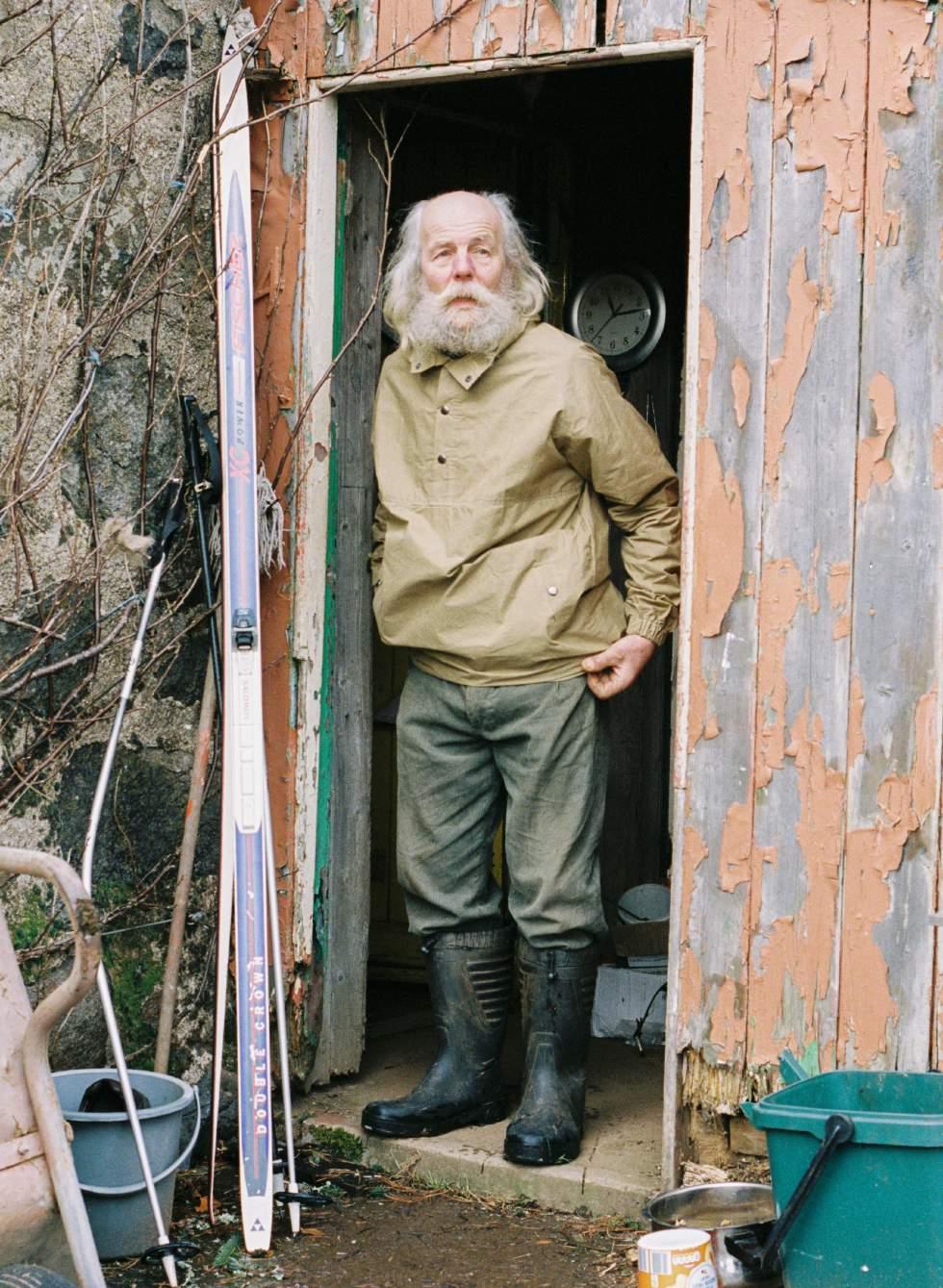

HughClarke-IndustryTalks
Lead designer innovation, advanced concepts and trend researcher
Hugh is a creative collaborative and resourceful creator with 15 years of experience successfully designing and developing commercially balanced sportswear including products for several Football FIFA World Cups and the Olympics He is a technical thinker driven by solving functional problems with a creative out-ofthe-box mindset

RavKiran-IndustryTalks

Rav has been providing years of successful creative solutions in Fashion Design & Creative Direction in Sports Lifestyle & Streetwear all over the world – spanning various organisations groups & brands His expertise in all areas of fashion design & current involvement with the sports brand Umbro has created some of the brands most profiled & influential collaborations and collections to date
AndrewDudgeon-IndustryTalks
Andrew is an award winning apparel designer and freehand digital illustrator with an immersive progressive and process driven approach to design storytelling and illustration Over 15 years experience working on extreme conditions technical apparel through elite performance wear to lifestyle/sportswear crossover product
OliverHubbard-HeadofPartnerships
Oliver has worked in international brands at the heart of product management over the last 20+ years with a strong understanding of markets customer segmentation and the full product creation process Oliver supports the growth plans for SSEAMS magazine as Head of Partnerships

Contact Oliver@sseams co to discuss your plan
AmeliaPeng-TrendReporter
Amelia Peng is a textile artist, designer and material research & developer While attempting to find a medium to portray her visual interpretations of materials and ideas textiles proved to be the ideal process by which she could convey these images with permission of the Art Master of Textiles Woven Royal College of Art in London She has also worked for lululemon as Fabric Developer of Global supply chain management
TsvetiEnslow-TrendandCulturalEditor


Tsveti is a trend and cultural insight expert who partners with brands, trend, and creative agencies to deliver bespoke solutions By exploring the intersection of consumer behavior culture lifestyle and design shifts




Tsveti identifies and translates emerging trends into new opportunities to help clients anticipate and plan for the future
VictoriaForsyth-SSEAMSGOEditor
Victoria is a lifestyle and portrait photographer who has worked in fashion film and television for the past 10 years
Victoria specialises in visual story telling adopting a documentary style to portray the stories behind successful brands Victoria takes the lead on SSEAMS GO Lifestyle content
ADVERTISEWITHSSEAMSMAGAZINE
Quarterly issue
Behind the scenes of emerging apparel brands and their makers
Audience; Garment lovers and apparel makers united
Based in Scotland putting a spotlight on local brands and further afield
New SSEAMS GO section; what you wear & where to go featuring best indie businesses
A community perspective; supporting each other and encouraging collaboration
By issue 3/4 audience numbers between 10 to 15k
Ability to pre-order hard copy magazines from issue 3

PAGE 97

Latest insights and trends from our leading industry contributors
PAGE 98 TO 101
Hugh Clarke talks 3D design and how technology can make a positive difference
PAGE 102 TO 103
A prelude to an upcoming full feature Metaverse report by the SSEAMS team
PAGE 104 TO 107
Andrew Dudgeon combines apparel design skills to add illustration to his design toolkit
PAGE 108 TO 111
Diane Richardson and Matthew Abbott share their commitment to supporting Made in Scotland garment manufacturing
PAGE 113 TO 116
Introducing newcomer, Simon McAleese of Deliberate indifference - and the emergence of his much admired illustration work
PAGE 117
The team at SSEAMS pick a few of their favourite independents to visit in Scotland
PAGE 118 TO 120
Behind the scenes of what makes this coffee roaster so special
PAGE 122 TO 125
Photographer Elliott Hepworth combines road tripping and hillwalking in the Scottish Highlands and shares his journey and shoot with us
PAGE 126 TO 132
Opened in 2018 by food writer Jess Elliott Dennison, she opens her doors and shares her story
PAGE 133 TO 138
Professional Photographer Scott Duncan shares his favourite Scottish getaway
PAGE 140 TO 144
Owner Laura Wilson introduces her curated guest house & cottage experience
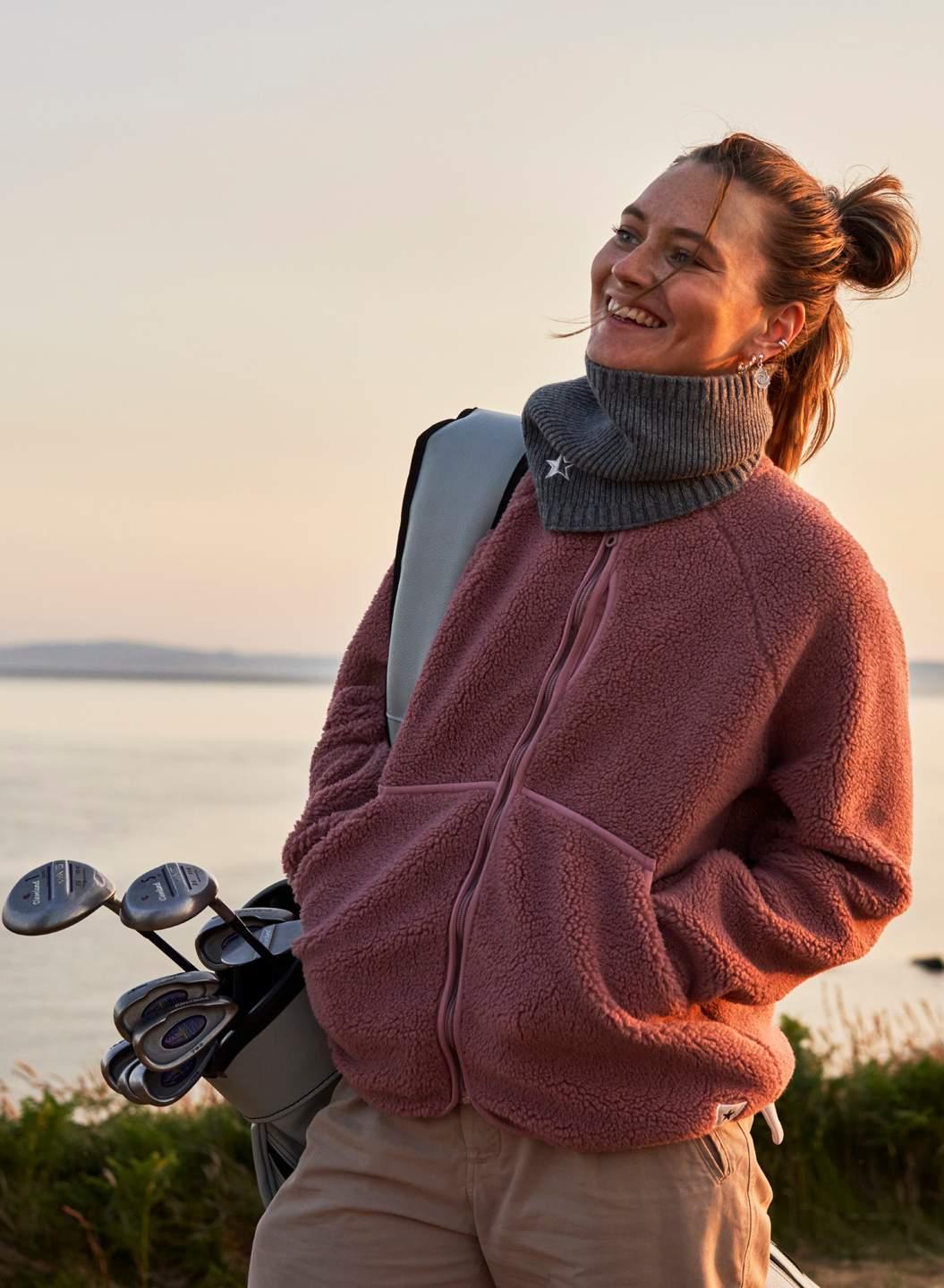



Welcome to issue 3 and our NOW \\ WHAT themed dossier of news from our industry friends. As we go out to press, we give special thanks to all our contributors who have made this edition a truly exceptional page turner.
Introducing Robin Clementson, Co-Editor, who has championed SSEAMS since its inception. A Journalist by trade with a passion to support emerging brands, he is a natural fit to our ethos at SSEAMS. Here, to support and service this fine, dynamic industry.
We hope you enjoy reading and discovering the talent 'behind the scenes' of the apparel industry. It is a privilege to steal some time from the brand custodians and put a face to the brands we know and love. A special thanks to Paul Walker for taking centre stage (Front cover). And, thanks to Simon McAleese, new kid on the block, aka @Deliberateindifference for illustrating us - your work brings a welcomed warmth to what can sometimes be a too serious clothing industry. Check out the Industry Talk section to see the growth of illustration work adding a new dimension of personality to brands content creation.
And, one united message to say to our friends overseas, we pray for peace and send our thoughts and hope for a better future.
Welcome to the Spring issue!
Diane and Robin





The home of SSEAMS magazine is Scotland. The year is 2022, and these are our local heroes at home and throughout the UK...


Before my career as a fashion and textile designer, I had a life out of school as a microbiologist. I aspired in high school to become a scientist so an HND in Microbiology was the logical next step. Working for a laboratory from 2009 until 2014 I began to grow weary of my career, I began to lose enthusiasm for what I was doing and struggled to find a reason to wake up in the morning. It was at this point I decided to make a change and try something which I enjoyed more than I felt would make a good career.

I dropped my hours from full time to part time and applied to Edinburgh College to study HND Illustration. I had a very basic portfolio and had no chance of getting in, but the interviewer decided to offer me a spot on the BTEC First Art & Design course.

This was an introductory course to A&D which I threw myself into head-first. It offered an opportunity to learn various techniques, to conduct contextual research, to visit galleries and museums and I loved every minute of it. I finished that year with full marks across every assessment and was awarded the medal for academic excellence from the college for my effort. From here I was offered a spot on the HND Contemporary Art course along with the HND Textiles course. Textiles allowed me to begin merging my interest in sculpture and design with a practical output.
Learning the skills needed to create and design fabric before turning into something wearable or usable intrigued me. After three years at Edinburgh College, I entered 2nd year at Glasgow School of Art to study on the BA (Hons) Textile Course. 2nd year at GSA is a series of workshops in the structural and surface disciplines of textiles – Print, Embroidery, Knit and Weave. Structural textiles interested me, and I was terrible at knitting, so I chose weave.
I fell in love with the industrious nature of the George Wood looms, the banging and rattling when in use and the vast array of different coloured and textured yarn on the shelves. I completed my final year in 2020 with COVID and lockdown landing in March. At this point university was over and our grades were awarded holistically.
I graduated with a First-Class degree and then won the degree show prize from the Incorporation of Weavers and was chosen as a finalist in the Colour in Design Award at New Designers (digital!)
Jobs were obviously thin on the ground so not knowing how long this pandemic would last, I enrolled on the MDES Fashion & Textiles course at GSA. I felt if I was going to be stuck at home I may as well keep learning. I worked from home until December 2020 when I was awarded the Stuart Hollander scholarship by The Worshipful Company of Weavers, a top award which came with enough award money to be able to rent a studio, purchase equipment and continue developing my practical skills without the need for university facilities.
I carried on with my studies focused on fashion design aiming to create a series of looks for final pieces. Due to the hybrid learning approach, our final hand in became either a wholly digital collection or to make one physical look. I created a look consisting of a coat, shirt and trousers inspired by my past growing up in a post-industry community. I graduated in September 2021 with a Master's distinction.
I fell in love with the industrious nature of the George Wood looms.
Jonny MacKinnon Designs grew naturally out of the COVID pandemic throughout 2021. If it wasn’t for COVID I wouldn’t have been working from home; if not for WFH, I wouldn’t have taken on the studio; if it wasn’t for the studio, I wouldn’t have been creating work and if it wasn’t for the work being created, I wouldn’t have been awarded a commission to create a wall hanging for the Worshipful Company of Weavers offices in London.

From this commission and the success of my final Masters collection, I applied to the Tennents Light Spotlight Project with an idea to marry the cashmere waste reducing project for the wall hanging with the cutting of garments from my Masters collection and was chosen as one of five winners.
This comes with an award, mentorship from Bash the Entertainer, DJ Nightwave, and designer Hayley Scanlan.
Culminating in a final show at SWG3 in September where I will show a mixture of looks created wholly from textile waste – deadstock yarn and material and waste cashmere selvedge.
My wall hanging commission was delivered to the Company of Weavers in February of this year at a beautiful awards ceremony filled with industry leaders. I have always dreamed of making something important enough to be kept in a museum and this dream will be realised in 2030 when the wall hanging leaves the Company offices

and becomes a part of the permanent textile collection at the V&A London.


After the excitement of all that calmed down, I am back at work designing and weaving fabric for my Tennents Light Spotlight Project. I am continuing with my Masters collection as I never really got to explore my final designs which were littered with ideas for garments, all using my own woven designs and waste fabric from mills in Scotland. This will keep me busy throughout the summer of 2022 and from this project, I aim to be launching a small capsule collection for display in September and for sale before the end of the year. I’m hoping this is successful enough allowing me to continue working into 2023 on a second collection for Summer.
My whole practice is inspired by my surroundings, where I grew up and the rich and vast history of Scotland. My family and I spend our free time in the many galleries, museums and castles littering our country. I also volunteer at Summerlee Industrial Heritage Centre in Coatbridge one day a week, a museum I frequented often growing up in Coatbridge myself. Here I look after the weave room, maintaining equipment, demonstrating the looms to visitors and hopefully inspiring future generations of textile designers.
W: www.jonnymackinnon.co.uk
IG: @Jonnymackinnondesigns






Relevance and permanence is a delicate balance to strike for any brand and Kenneth Mackenize’s 6876 has managed to do just that by taking a product first approach to design that is both progressive and timeless. Born in Dundee and educated at Art College in the North West of England, an early role as Sales Director at the influential brand/store Duffer of St George led to Kenneth founding 6876 in 1995.

Early success saw the brand being picked up by some of the world's best independent stores - Union New York, Dr Jives in Glasgow and Browns London - and his inclusion in Arena magazines list of 50 people who shaped Menswear in the 90’s. Now in its 27th year, the brand has maintained its influential status by selectively releasing a mix of new and archival designs outside the traditional fashion calendar, working through a direct to consumer model and a select number of like minded retailers.
We spoke with Kenneth about his time directing 6876 and what the future holds for the brand.
Why do you think 6876's archive product still feels so relevant 20 years later?
That's for the public to decide but I suppose the aesthetic of the brand has remained very defined so it has its own space in the market.
You’ve innovated throughout your career, from machine washable tailoring to your use of “technical fabrics”. How important is it for you to be progressive with products?
Hi Kenneth, thanks for taking the time to talk to us. Can you give a little background into what prompted you to start the brand?

Basically I felt I had experienced as much as I could at Duffer and wanted to create my own aesthetic (although this was created in quite a natural naive way).
The brand launches a mix of new product and archive styles throughout a calendar year. How do you decide what to release and when?
Generally, I still try to link in with the seasonal climates but many new developments are informed by fabrics & how I feel in myself at the time.
What pushed you to move away from a traditional A/W and S/S cycle?
I think it was more the idea that wholesale needed a large cash outlay and that it wasn't very profitable.
Even when resources can be difficult to find I always try to be inventive with fabrics and construction. For instance when it's a classic style being reproduced, I think it's important to offer the style in a different way.
How has this worked alongside your long standing support of UK and European production?
With such a small brand I tend to have to work hard to keep relationships working in terms of manufacturing and making in Europe (although very tricky now due to BREXIT) & the UK means I can be in control of the quality better.
my main aim is forging new relationships and reconnecting to widen my resources.
What do you see as being the biggest shift in Menswear since you started the brand in 1995?
i think the adoption of what was known as "streetwear" into luxury fashion.
The brand has a loyal and longstanding following. How do you balance that with generating new interest in the brand?
I really appreciate the support from customers as without them there is no brand and in terms of attracting new interest I honestly think that's something that could be done better by myself.
You’ve personally worked/consulted with a number of brands including Alife, Fred Perry and United Arrows Japan. How have you enjoyed that side of your career?
Mostly I really enjoyed consulting for other brands and always tried to design what I felt was right for the brand rather than imposing my style on them which was a challenge I enjoyed.
6876 has partnered with a diverse range of collaborators including Kazuki Kuraishi, Rohan, Trickers and Jennifer Kent. How do you choose who to work with?
First up, I have to think it's believable that the brands can work together, and, secondly, I have to have a good feeling about the people or know them well.
You are a part time lecturer at Kingston University - how important is it for you to pass on what you’ve learned to the next generation?
I have taught for a very long time and always enjoyed it, however the system has changed dramatically in recent years and the possibility for part time teaching from the industry has been severely curtailed which I personally think is a huge issue. Basically the courses need people from the industry.
How do you see 6876 moving forward in the future?
Brexit and Covid has been a very challenging and damaging situation for brands and at the moment it's very difficult to develop and produce products as a small brand.
So, my main aim is forging new relationships or reconnecting to widen my resources. Ultimately I want to produce a much larger breadth and number of products as at the moment I feel we are not offering enough to our followers. Also, one project I really still want to do would be creating pop ups within stores & creating unique products for those events.






For more than thirty years Walker Slater has been delivering the truest form of sartorial excellence, a name synonymous with the mark of fine quality and the delivery of an unrivalled customer service. At the helm is Paul Walker, a man that is inspired by the 'Carelessly Elegant’ and a stalwart fan of independent dressing.
Whimsical, warm and with an eclectic ingredients of fine British classics through to Japanese urban influence, Walker Slater breathes new life into the traditional, using the very best in handpicked fabrics from the Hebrides right across to the Scottish Borders. Here we speak to Paul about brand life over the past two years.
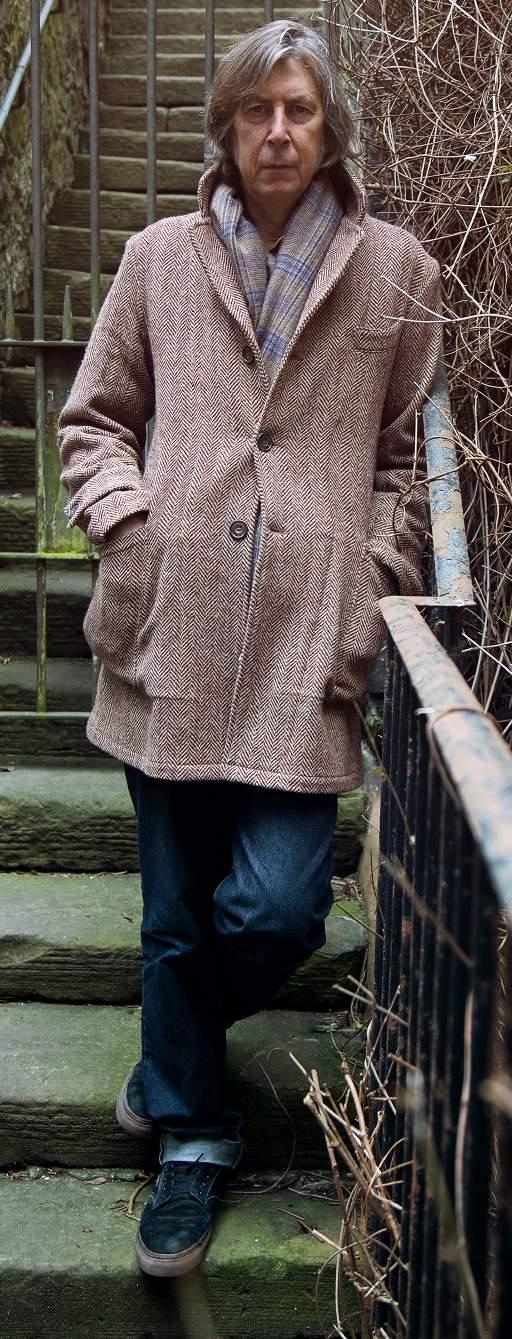
As the pandemic draws to a close in terms of restrictions, what has been the effect on business. Are you getting back up to full speed?
As with many businesses in our sector we focused on growing and developing the Walker Slater online store during the pandemic, creating a new website and looking at ways we could communicate our product and message to customers at a distance. This included re-working, improving size charts and measuring guides so that customers find it easier and have confidence to shop. We have engaging social media, and customer service teams to back this up.
In terms of the retail stores we have seen a resurgence since reopening, which is promising, there are a lot of customers looking for wedding attire as they are now planning and able to attend events. This has been the case in all of our sites, Edinburgh, Glasgow and London.
Large scale happenings in the cities also helps the stores, we saw good sales over COP26 in both Glasgow (the host city), but also in Edinburgh as many delegates travelled around. The 6 Nations rugby tournament also draws customers into the stores.
How do you think the pandemic has impacted behaviours in retail shopping, what have you witnessed? Online versus offline?
Customers are more or less shopping in the retail stores as they did pre pandemic. We have quite a lot of regular customers who have long standing relationships with the team members in store and enjoy the in store experience, so it has been good to see these people return.
Usually visitors to the cities help, which of course we have seen less of but with the travel industry opening up – again slowly we are seeing these types of customers returning also which is really great. Online is still steadily growing, so overall it is a positive outlook.
Do you think there is a thirst for knowledge now in the consumer, as they try to find out more about the people/business that they are buying from?
Walker Slater attracts very interested customers, people who really want to know and make considered decisions in every area of their lives. We have very well trained staff who are on hand in store, on the phone or by email to assist with queries. We are a small team, and people can ask each other if they aren’t sure and bounce some questions over say to our menswear manager, or tailoring experts so we find the best, most useful and concise explanation for our clients.
A lot of our clients come from professional and academic backgrounds and are aware of the brand because of its thoughtful and well designed look, they however don’t want to be wearing items which are loud, or flashy, or heavily ‘branded’. Our clients are most certainly coming to the brand and then becoming recurring customers because they have had pleasant and informed conversations with members of our team.
We are not known for being ‘hard sellers’ so we are happy to send cuttings of fabric out, or have multiple conversations to ensure we help our customers find the correct item that fits into their life and wardrobe.

A lot of our clients come from professional and academic backgrounds and are aware of the brand because of its thoughtful and well designed look, they however don’t want to be wearing items which are loud, or flashy, or heavily ‘branded’.
Our clients are most certainly coming to the brand and then becoming recurring customers because they have had pleasant and informed conversations with members of our team.
We are not known for being ‘hard sellers’ so we are happy to send cuttings of fabric out, or have multiple conversations to ensure we help our customers find the correct item that fits into their life and wardrobe.
Is there a bigger/greater need or thirst for considered purchasing where customers want to know about quality and trace the garments back to their origin?
We have for our sector a fairly local supply chain. Most of our fabrics are made in Scotland by small mills and weavers, we work very closely with them to design exclusive tweeds. Some small makers in the UK sewing things like jeans and waistcoats are great partners to us. A lot of really good hat and smaller accessory makers are also in Scotland, so very close by. Of course we buy fabulous Scottish cashmere scarves too.

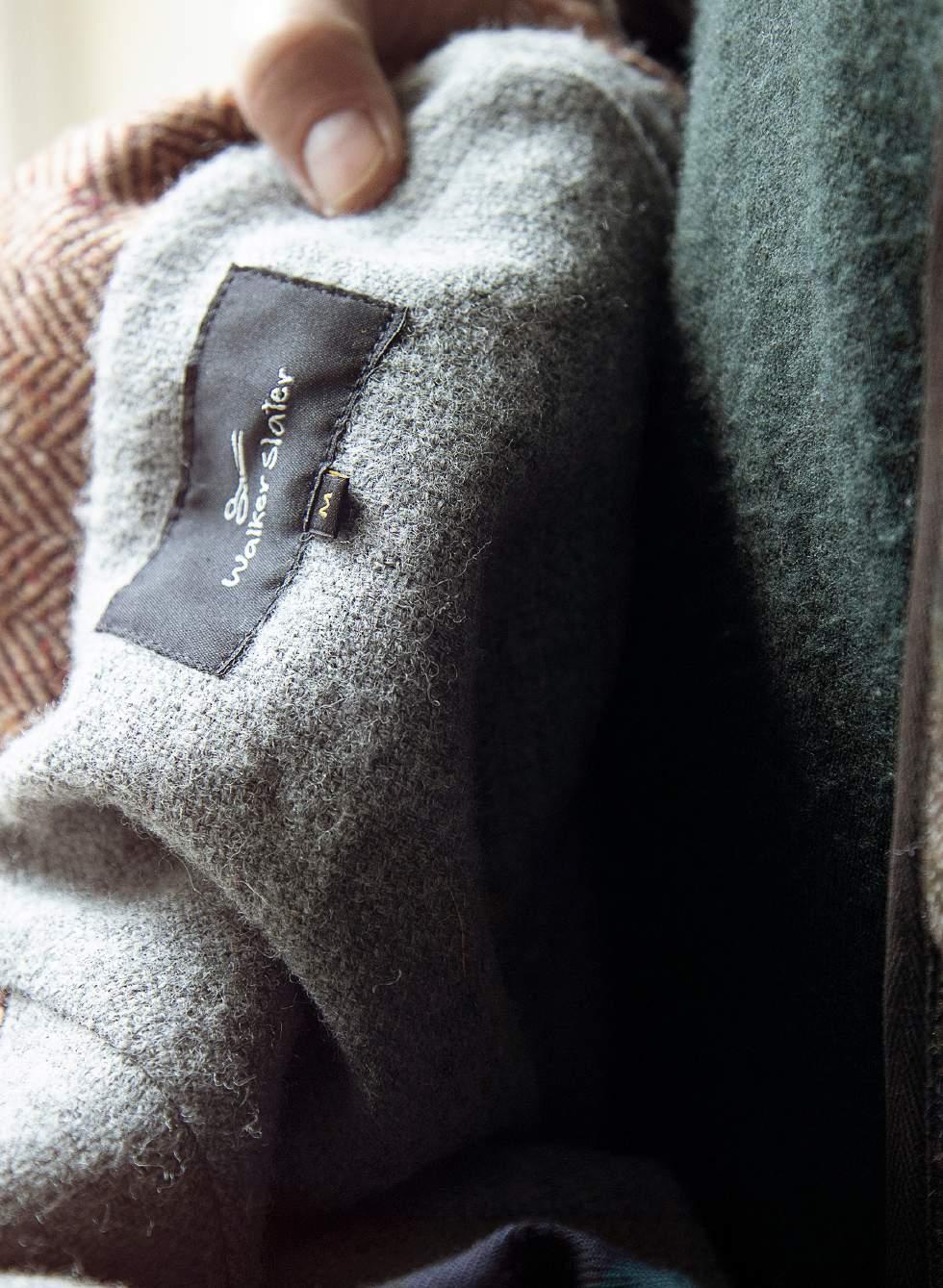
The majority of our tailoring takes place in Portugal, we work with really good partners there and their quality is second to none.
Portugal has a long history of textile making, sewing and weaving, this is very important to us and something which our customers enjoy hearing about and that they see in the high quality garments produced.
The European flair and sophistication in jacket construction is important to Walker Slater as we use traditional fabrics but in working with these partners we receive a contemporary fit jacket and not a ‘boxy’ one.

It is very important to our clients that things are made to a very high standard and that they are made in the EU and not China. This is part of our ethos and philosophy and will not change.
What is the focus of the Walker Slater brand right now? What are the key elements to the business for you as we move into 2022?
At the moment we are constructing the interior and planning to move soon to our new bigger warehouse. This will help us fulfil web orders more efficiently and distribute stock to our international wholesale partners in Germany, France, Austria, Iceland and Japan with ease.
The AW22 collection was shown at Pitti Uomo in Florence in January. This was well received and we took a good number of orders from abroad, we are really looking forward to this collection being in our own stores also. We continue to train and develop our people so we can give great customer service and improve where needed.
Perhaps some new retail opportunities will arise, we are thinking and talking internally about other cities which could work for the brand. We may also look to the US and to maybe find a partner to work with in Boston.

Have you seen a growth in how diverse the customer is in terms of age and
trends? Do you think it’s clear to consumers how both wool and tweed can be worn differently depending on an individual's style?
Walker Slater has a very broad customer basis, we see graduates coming in to buy their first suit, perhaps or slimmer fitted Martin, we see grooms buying wedding outfits for them and their party (usually covering all ages), right through to people in the 80s who’ve been long standing clients or sometimes discovered the brand and find it fits well with what they are looking for.
We make a wide range of fits in terms of suiting, our Martin is slim, Edward more classical/but still fitted, William a wider block, James a nod to the vintage style and Francis our dressy suit for the flaneur.
All of our items are sold individually so this is helpful if a client is looking for say the jacket only. We are told often by customers that they get a lot of wear from their wedding suit, breaking it up to wear the jacket alone with jeans, or the trouser with a woolly jumper. I would say we most certainly have something for everyone, maybe even 2 or 3 things!
How important is it for Walker Slater to embrace a new audience whilst not losing the existing?
Our audience is always growing and evolving – we know and recognise this. We create inspiring store interiors and photoshoots with varying themes to capture people’s imaginations and help them think of ways our product could fit into their lifestyles.
Our in-store teams are engaging and customer focused, they are able to assist and deal with everyone as individuals, finding what they need and sourcing the items which are most suitable. We hope that people are lifelong customers of Walker Slater and treasure their items, repair them and return when they are looking for a new addition to their wardrobe.
made in the same place. The menswear side features a rugged, outdoors, more ‘utilitarian’ look which ladies do not.

The suiting, tailoring is very much something we’ve seen a huge growth in our female customers asking for. Women are enjoying wearing suits, and it’s a great look! Other items such as bags, scarves and sometimes knitwear are one unisex collection spread across all stores – this works well!
View the collection; walkerslater.com
Finally, how does the menswear offer differ to the female?
Generally the same fabrics feature across both collections. The cloth is central to our brand identity and most of the items are
Veske is a Scottish, design led, accessory brand. Veske is a sub brand for the well-known kit bag manufacturer, Montrose Rope and Sail Ltd, who have grown their reputation and business within the Oil and Gas market globally, nationally and locally in the North East of Scotland over the last 40 years.

After the oil and gas downturn in 2014, the company recognised a need to diversify some of their product range so that they could continue to develop new business and expand into new markets. It was then they set their sights on growing their new sub brand into the fashion and lifestyle market.
Veske began initial development in 2018, with our products finally launching last year. We had hoped to launch sooner, but the Covid outbreak had an impact on that.
The company was first established back in 1789, hand manufacturing rope and hand sewn sails for the local fishing fleets in Montrose and the North East. Fast forward over 200 years, the traditional
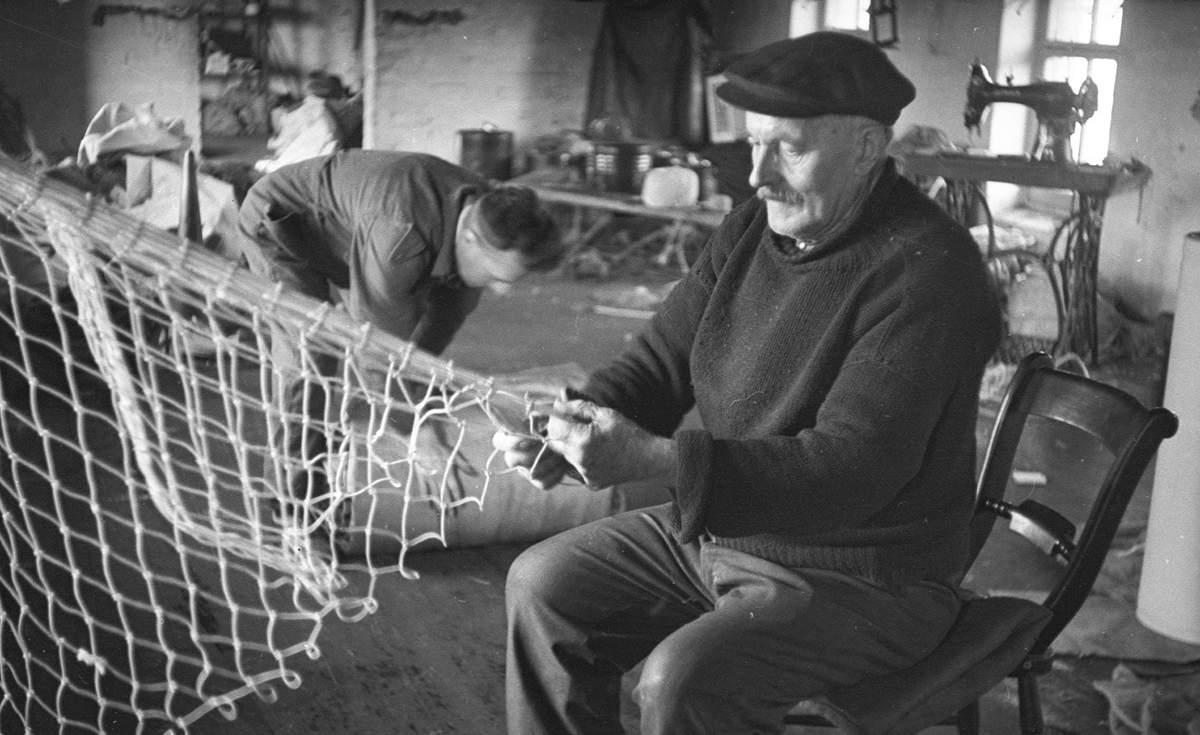
family business has been in the same family for over 4 generations of the Paton family. It was important Veske was authentic to the heritage of the parent company but also that it adopted new design ideas to make it appeal to the fashion and lifestyle market. With the core values of quality, local hand manufacturing is still at the heart of what we do.
With values passed down from Montrose Rope and Sail ltd, the Veske brand products are designed to last and transition through seasons. As well as this, local manufacturing at our work shop in Montrose, Angus means that we ensure exclusivity and avoid waste in over making by only making what is ordered
Designing, developing and hand manufacturing everything at our workshop in Montrose has also had an impact on what materials and suppliers we have considered, with as much sourced as close to home as possible. In our first release, the “Heritage Collection” we use materials from Halley Stevensons in Dundee, only 30 miles away from the Veske manufacturing workshop in Montrose.

We are still very much at the beginning of a new journey, we plan to grow Veske within the UK fashion and lifestyle market before expanding to
international markets that appreciate Scottish made products, heritage and craftsmanship. We did take part in a trade show in Japan early last year and Veske has proved to be popular in this market, we have had repeat orders from 2 separate customers as a result of the trade show.


Over a casual coffee on a very rainy day in Glasgow, Anne and I started chatting about the reasons waterproof clothing was largely only available in bright colours and unflattering, uncomfortable shapes for women. Being outdoor lovers ourselves, we used these garments for walking or mountain climbing, but 98% of our lives played out in outdoor places where these coats weren’t at all suitable for our everyday activities – activities which often still involved being under our
McElligottgreat British rainy skies for long periods of time. Anne, on maternity leave at the time, was pushing a buggy around Glasgow most days and this was just one of the many daily needs for a waterproof that made her feel good and kept her dry and comfortable. She brought this subject up knowing I worked in the industry, developing waterproof products for other global brands and it was here the seed for Protected Species was planted.
The product is innovative and unlike other technical performance pieces on the market, what makes Protected Species stand out from the crowd?
Our difference from other lifestyle waterproof brands in the market is definitely the versatility and smartness provided by our specific fusion of timeless style and technical performance, and it drives everything we do here at Protected Species. We have a lot of interaction with our customers and the comment we hear most is “I never take it off” and, of course, this is music to our ears because this is exactly the point…a protective piece of clothing you actually want to wear, anywhere.
The fabric is a large part of the secret – soft, fluid, with a four-way stretch and a slight sheen delivers a luxurious shape and handfeel which has often been described as “sports luxe”. We truly believe this creates the multi-functional usage of our products, and combined with the quality, we are really proud to be a concept which is the antithesis of fast fashion and delivers hard working minimal wardrobes - the only real way to reduce waste.
Whilst we’re on the topic of doing things differently, our manufacturing is slow, considered, low volume and quality driven and although, at times, the wait is frustrating for us. and our customers! we’re happy doing things this way. Our manufacturing partners are our team, we have a complete mutual respect, and without them we couldn’t do what we do. This is a crucial part of the Protected Species system.
It’s always incredibly empowering to discover a female-founded clothing company. What credentials have the team got to master what is a very difficult product category to deliver?
Golf! My background lies in product development and management working for various global performance brands over the years, but most recently my position as the product director for PING golf clothing involved working alongside the top Tour players in the world. This is where the technology for our collection derived. I spent many years developing fabrics and outerwear to keep the professional golfer warm, dry, comfortable, smart in appearance, and critically, ensuring no restriction in movement – benefits inherent in our waterproof collection today.
On the subject of women, our fabric mill is managed by a woman who knows exactly the fluidity, stretch and softness required without substituting any of the fabric performance, and our factory is owned by a woman who describes her work as “art”. She combines laser cutting and heat technology with an incredible creativity in pattern cutting – without these women, the brand wouldn’t exist and as such we work as a true partnership helping each other along the way.
Ahigh-performance outerwearbrandbornin Scotland,drivenbyadesire foraproductthefounders desperatelyneededbut couldn’tfind,delivered honingtheirexpertisefrom theworldofGolf.

Our careers and experience in technologies definitely bring authenticity, but as women creating the product we ourselves desired to simplify our daily lives, we think we are genuinely aligned with our customer’s needs and values and this is the biggest thrill receiving their emails and hearing about their adventures with the PS jacket.
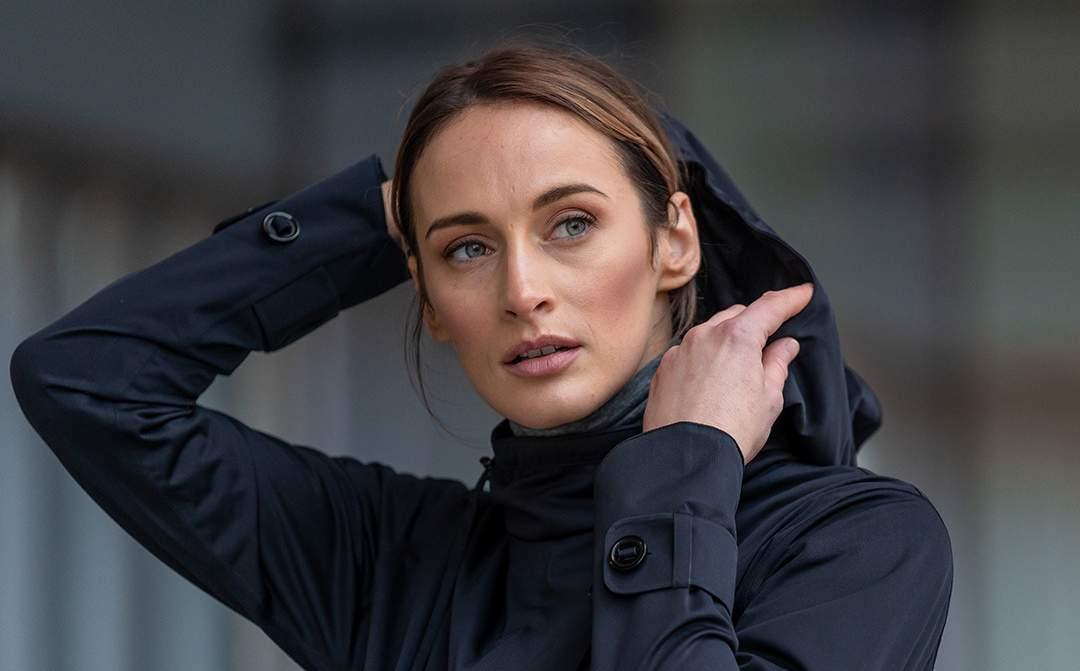
The designs of PS are by women, for women…tell us more about who your customer is?
The inspiration at the beginning was for a product we ourselves as women needed, but the inspiration now is our community. The reaction has made the hard work worth it – support, loyalty and so much lovely feedback it has been simply amazing. We often ask our community what they would like to see in our range and they give consistent feedback which must mean they know what they’re talking about!
The features requested for specific activities are really interesting and for a product developer something I love to get my teeth into - cycling to horse riding to motor racing and even outside yoga, we discuss the lot!
We are a Scottish born company and have huge support in Scotland. Places such as Edinburgh and Glasgow are cities which are perfect examples of the changing backdrop our customers might find themselves on a daily basis. Working in the city centre, commuting back to the countryside, socialising on the beach, taking the dog for a long walk and attending sports activities outdoors with the kids are among the many activities our customers take with their jackets.
What is the key behind creating highly technical outdoor clothing which doesn’t compromise on style?
The smallest detail from a tiny colour shade anomaly, to a 1cm difference in hem width can alter the silhouette drastically, and completely destroy the aesthetic and fit of a woman’s garment. The same goes for functionality, any performance fault can render the product unwearable.
For us, the key is in doing one thing well which allows us to balance all attributes perfectly. We pour over the detail, and we extensively trial the product, it is exhausting and it’s why our collection is small! but we feel this delivers our vision, and I think it’s why our customers are so loyal to and so vocal at spreading the word about our coats.
You recently did a collaboration with Brompton Bicycle, what are some of the key features of Protected Species outerwear that translates so well into sportswear?

We have quite a few high profile faces who own a Protected Species who are regularly seen on the Golf course and in the horse riding arena. For cycling, one of the major features has to be the fabric. The waterproof and breathability ratings are in excess of 15,000mm & 15000gms but it’s the four-way knitted stretch of the fabric which makes them perfect for cycling, offering absolutely no restriction in comfort or movement for the ride.
We loved working closely with the expertise at Brompton to develop adaptable cycle specific features for use when on the bike. These features, crucial for the safety of the cyclist, where designed to be tucked away when the commute is over allowing the jacket to morph from a cycle jacket to an everyday smart coat –one jacket which does everything, perfectly fulfilling our less is more belief here at PS.
Shop the line >> protected-species.com

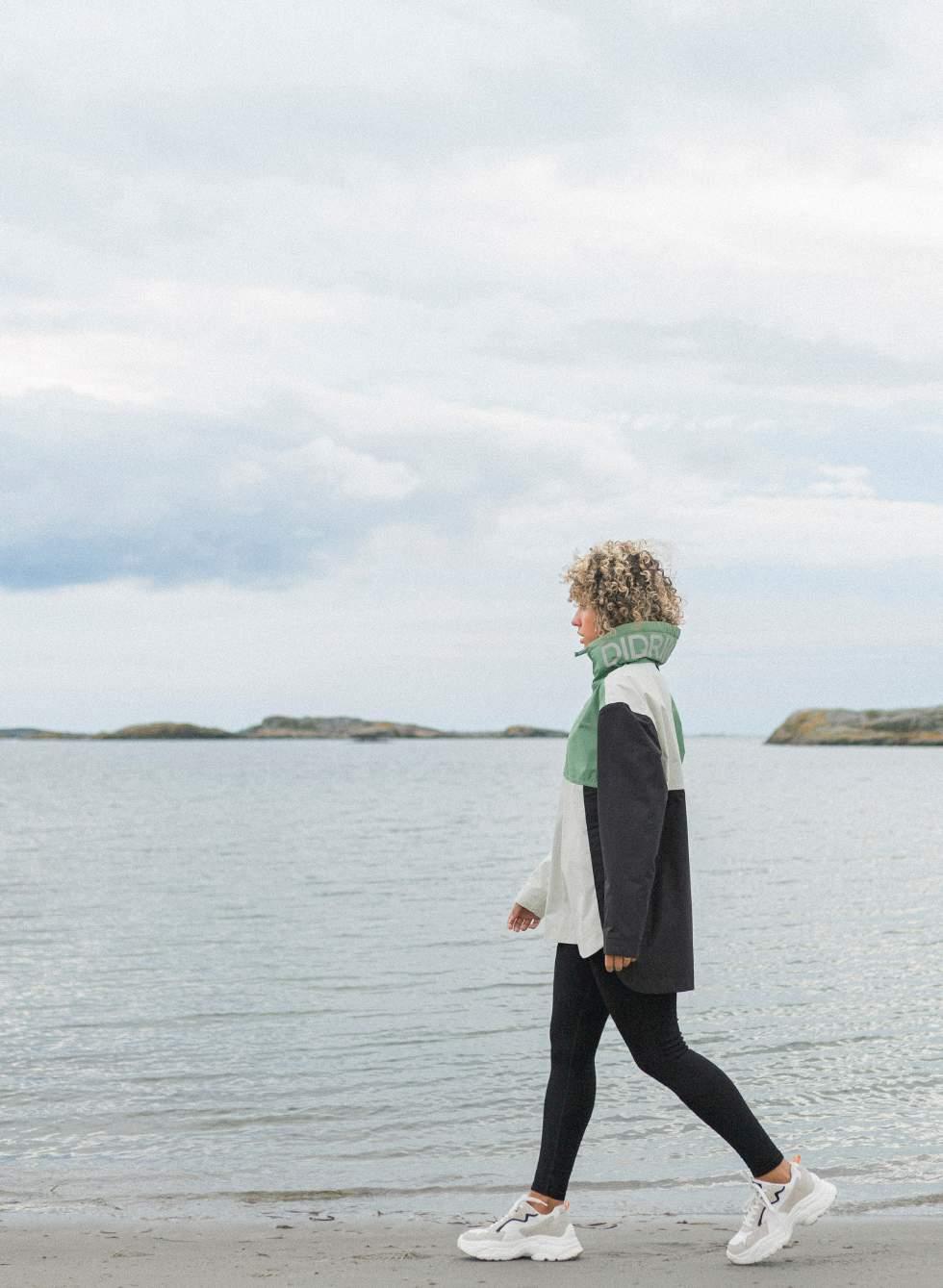
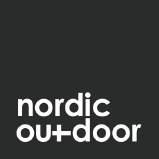
So tell us a bit about how Sounder came about – how did the two of you first meet?

Cathal: I grew up playing golf in a working class town just outside Glasgow – my dad was a golfer and he used to take me and my sister up to the golf club every weekend. So it’s always been part of my life.
I started working in fashion and eventually started my own brand Folk – I was in this world of fashion and music, and golf was like a part of my life that I kept secret from everyone. Eventually I decided it was time to treat myself to a new set of golf clubs, and someone recommended James as a club fitter. I went to meet him at his studio and workshop at Urban Golf in London, and we just hit it off straight away.
James: I had been buying Folk Clothing to play golf in for years – but I had no idea who Cathal was when he walked through the door. I think there was a shared appreciation between us –he feels about clothing like I feel about golf equipment – we’re both passionate about craftsmanship, and the combination of form and function.
Cathal: We spent many hours in James’ workshop talking about golf, and how we loved the game but hated the way the golf industry promotes the game – it’s all about performance and data and technology. That’s not the game that I fell in love with as a kid. Real golf is about spending time outside, with your mates, enjoying the simple pleasure of hitting a ball around… I’m nowhere near as good at it as James is, but it’s that simplicity and authenticity that we want to capture with Sounder.
James: Inn many ways harking back to the way that golf has always been in Scotland – it’s a game for everyone. I love coming up to play golf in Scotland – every year I do a trip to the courses in Machrihanish, which is nirvana for a golfer like me. We’re not an overtly ‘Scottish’ brand – but Scotland is the spiritual home of golf, and it’s that spirit that we’re trying tap into.
James: Sounder was the name of a brand of golf clubs back in the seventies and eighties –the brand of clubs that Seve Ballesteros played when he first came on the scene. The company went bust a long time ago, but I had acquired a set of the original club heads that they made for Seve. When Cathal saw the clubs with the Sounder stamp and the star, that was it – he said immediately that we had to call the business Sounder.
The partnership and the rapport between you is clearly a really important part of the business. How do you work together on the collection – who does what?
James: We’re obsessed with testing everyone on the golf course. The whole team is golf mad, and we only want to sell products that we really believe it. On paper, Cathal looks after the design side of things and I’m the golf nerd – but in practice we just shout at each other until we get to something that we’re both completely happy with.
Cathal: We want to build a golf brand, not just a fashion brand that does golf clothes. We’ve made an amazing golf shoe with Grenson, a travel range with Montrose Rope & Sail, and we’re working on a golf bag too. We try to take the same approach to everything – even if we’re sourcing a bag towel or a golf glove, we want it to be sustainably sourced and made to last.
Covid has made this a very difficult time to launch a new business. How have you coped with that?
Cathal: Like everyone, we struggled at first with the lockdowns, especially when golf courses were closed. But golf was one of the first things to open up, and since then golf’s having a real boom.
James: I think the pandemic forced people to reassess what really makes them happy. And it turns out that what makes millions of people happy is golf – heading out to the course to spend quality time with friends. There are lots of studies that show golf is beneficial to mental health – I guess I’ve always known that, it’s just that the rest of the world has realised it too!
View the collection - soundergolf.com
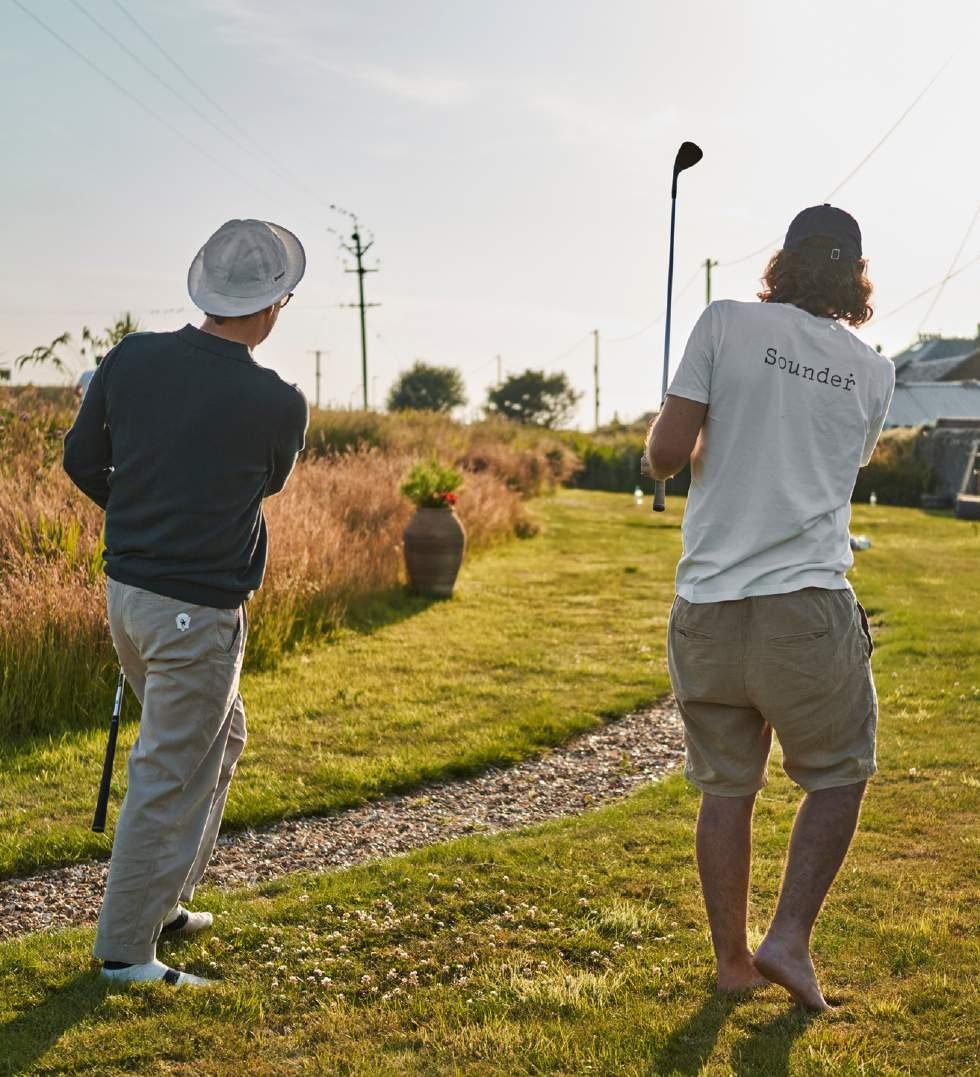
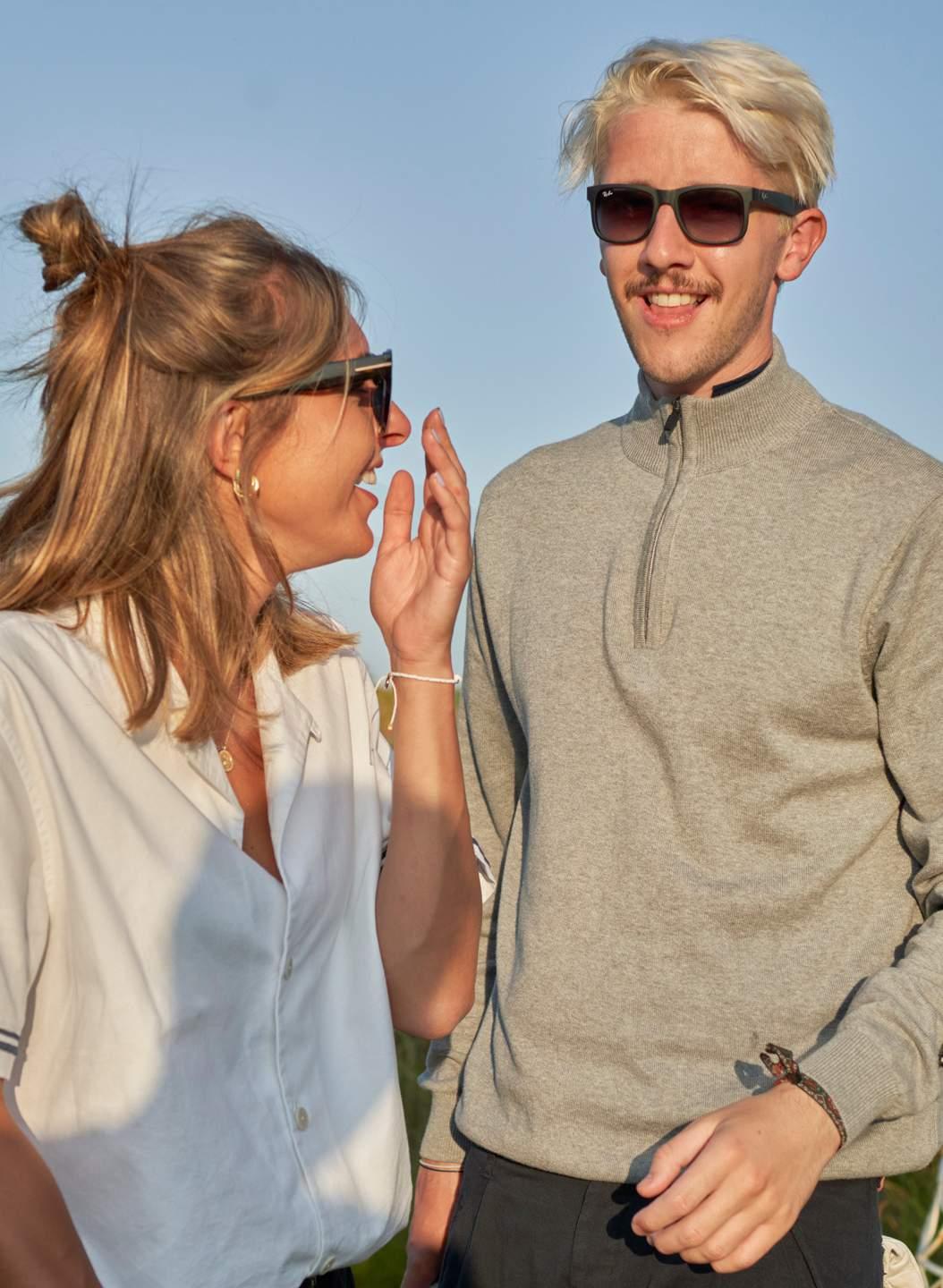
Imagecredit:BenIngham

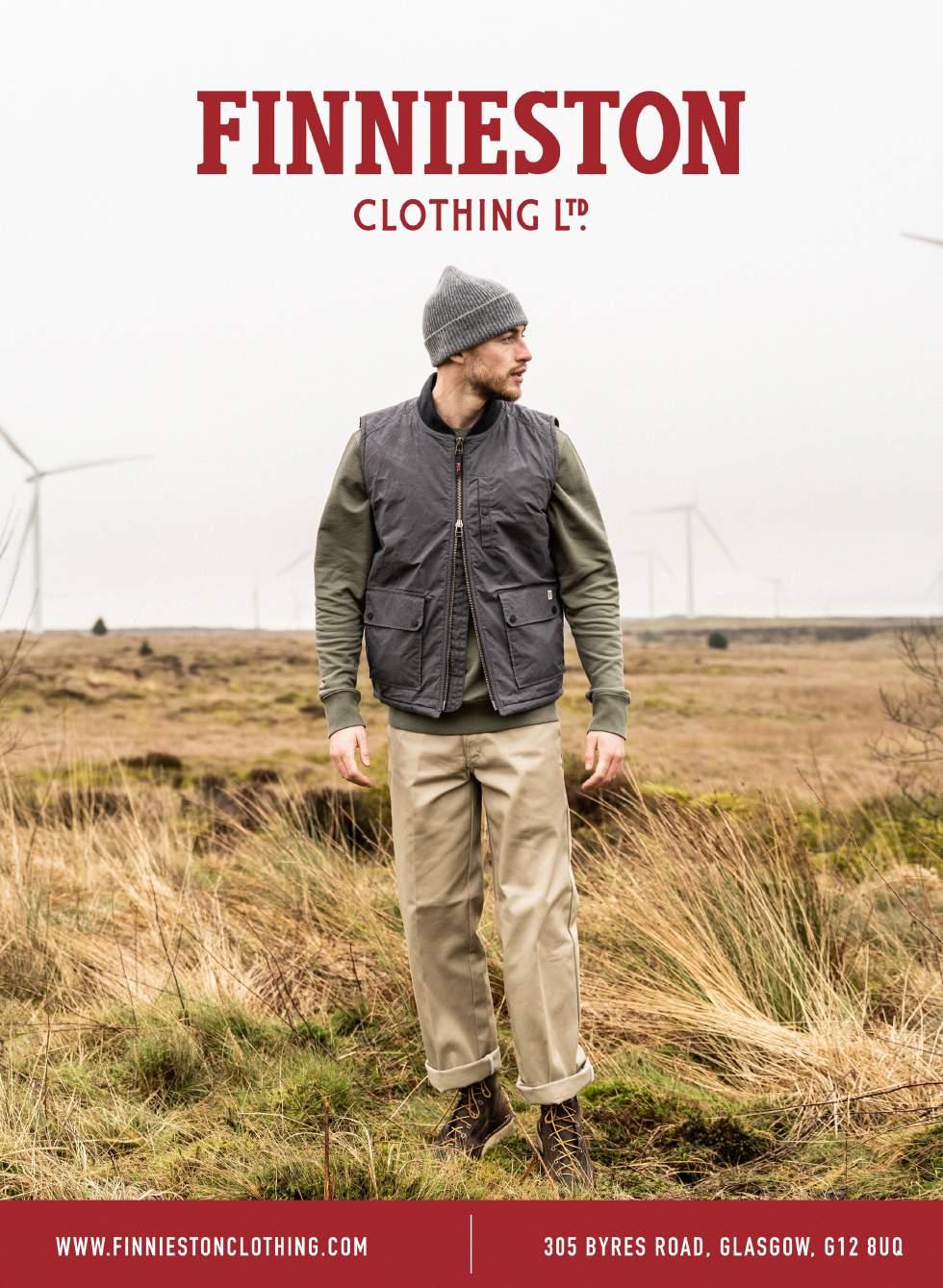

Yogi Footwear is a brand that many of us will recognise from a distinctive silhouette that has become a favourite with the workwear and military crowd. With an evolving programme of cool collaborations and brand partnerships, including the recent Korean War Correspondent inspired Nigel Cabourn shoe, we speak to owner Paul Batista about the brand and what led him to what is clearly one of the most forwardthinking shoe brands on the market.

Where did you grow up and how did your career path lead to your own brand?
I grew up in the market town of Dunstable just outside Luton in the late 70s and 80s. I originally studied Graphic Design at Dunstable College, however myself and a circle of friends were into our fashion, and I began to aspire to working in London, landing my first job at Paul Smith in 1989.

I then moved to Nottingham in the early 1990s to run the Nottingham store, Paul’s first, and immersed myself in the bar and club scene (Nottingham was a huge pull then with clubs like Venus, Deluxe, The Hippo and Kool Kat attracting people from all over the country). For whatever reason I was always into my shoes, so when the chance came up to break-through into wholesale at the Spanish brand Camper, who were new to the UK, that signalled my return to London. Thereafter it was always footwear, from Patrick Cox to Hudson, to OneTrueSaxon, and eventually to relaunching Yogi in 2016.
Can you tell us how Yogi first emerged and why you started a footwear company?
That’s a very interesting story. Yogi was conceived by the guys at The Duffer of St George back in the mid-‘90s.
They were sourcing dead-stock trainers (pre e-commerce) for their London store from all over Europe and happened across a batch of these orthopaedic looking casual shoes with something called a negative heel.
The concept was created by a Danish Yoga practitioner called Anne Kalso, who observed the way the people indigenous to South America walked barefoot on sand and how this positively affected their posture. The Duffer team brought the shoes back to the UK and, with the help of a guy called Richard Wharton (founder of Office Shoes) who put the guys in touch with a Spanish shoe factory, the Yogi brand was quickly appropriated by the Britpop/Acid Jazz crowd. Liam, Noel, Paul Weller, Bobby Gillespie, Galliano and The Brand New Heavies were all ambassadors for the brand.

Does the design, which is very distinctive serve a particular purpose or adhere to a particular value?
The negative heel is underpinned by a science in terms of its posture and comfort benefits, which is obviously relevant to today’s focus on spiritual and wellness. The brand resonates across the mid-twenties to mid-sixties age group, the common ground being an awareness of good product and its impact on the planet. It sounds simplistic to say it, but there are too many brands out there jumping on the sustainable bandwagon to sell units. Yogi is the antithesis of that without ramming our eco-conscious credentials down the consumers throat.
Does music influence your style and also your designs?
As I mentioned before, the brand was adopted early-on by the fashion/musical/creative community. The mid to late ‘90s was a pivotal time in British popular culture and a hugely creative time. Brands like Duffer, Sharpeye and YMC were at the forefront and some – like Barry Sharpe of Sharpeye – had strong musical connections, and the Yogi silhouette became iconic. It’s a great endorsement that Johnny Marr was up for doing a collaborative shoe and putting his name to the brand. That really galvanises the musical connection. My own personal style is influenced by military surplus and vintage sportswear, and Yogi is a brand that ticks the boxes for me in terms of authenticity and quality over some of our contemporaries.
What is your design process? How do you work?
and branding device first, as it conveys all of the brand attributes instantly. I really think it’s one of the strongest pieces of branding in our field. I work with a small but talented design, production and marketing team, so we’re as close as we can be to the brand which shows. Once we’ve established a new style/pattern the design process focuses on tactile materials like high pile suedes, reverse tumbled leathers and earthy tonal and sometimes gently contrasting palette.
We’ll also further develop existing components such as our negative heel outsole, such as using off-cuts of rubber and cork to produce the outsoles and engineer tactile layers into the product. Leather is our go to upper material because it’s a natural material and by product which is 100% biodegradable by virtue of the tanning process, as well as being durable and breathable.
Was any brand at the forefront of your mind when you started and also who do you admire?
Not really. I’ve been privileged to work with some great brands and characters in the industry. Camper, Patrick Cox, OneTrueSaxon and Yogi - iconic brands each with a clear identity.
Tell us about the recent collaboration with Nigel Cabourn. How did that come about?
When we re-launched it was all about the logo
We’re stocked in an amazing vintage/military store in Tynemouth called Common Ilke. Nigel lives and works close by and regularly buys vintage pieces from the store for R&D. I got a phone call from the owner saying Nigel was interested in developing a ‘Korean War correspondent’ shoe. We worked closely with
the Cabourn design team referencing historic armed-forces uniform colours and regimental influences. Together we developed a range of footwear which conveys Nigel’s handwriting underpinned by our hand-crafted, artisanal approach.
What were the main challenges that you faced getting started as well as recent ones with the pandemic?
We were lucky in the sense that there was already a lot of love for the brand historically. There was no grand strategy, just an appetite from international retailers to stock the brand again. Oi Polloi, Philip Browne, Fresh Store Torino, Sportivo had all stocked - in the case of Sportivo in Madrid were distributors - the brand in the late 1990s/early ‘00s.
The pandemic was tough in relative terms with Spring/Summer20 the most challenging season with no-one really interested in a considered purchase outside of slides and sports/loungewear. We bounced back ‘though for SS/AW21 and AW22 has been our best wholesale campaign to date. I think we’ve built a loyal following from a product led end consumer by virtue of quality and consistency, and therein is longevity.
What would you say is the DNA of Yogi? What does it mean to you and what do you want it to mean to others?
Quality, comfort and sustainability are the cornerstones of the Yogi brand. We produce in Portugal using locally sourced materials wherever possible, vegetable tanned leathers –a tanning process with very little impact on the environment unlike mass market

footwear which uses chromium in the tanning process, which is bad for the environment. The message is therefore that Yogi represents good quality product with an authentic heritage, at an honest price that is comfortable and will last and patina beautifully with age and wear.
Can you talk about the new collection and what’s around the corner?
There’s already an outdoor element to the brand in our materials and colour palette. For AW22 we’ve developed a new lightweight outsole, paracord laces as an alternative to our leather laces, and hook & eye lacing, which is interesting. There are more classic crepe outsole options on our best selling Finn style. We’ve just launched a mule program based on a 90s archive style which is obviously very relevant.
We’ve also launched a small complementary apparel collection which references our development process on footwear which is exciting. We’ve also got some very exciting collaborations in work but I can’t talk about those just yet. View https://www.yogifootwear.com/
Life can be just as tough as it is beautiful. Sometimes very tough. We all go through hard times, sometimes they can break us. There's no shame in that.
In 2017 our founder Nick suffered a nervous breakdown that made him suicidal. It is something he is completely honest about.
You too can speak without stigma or judgement, like him. Say your pain. Start important, sometimes life changing conversations.
FRAHM has already raised over £43,000 for mental health charities since we launched in 2018. We give £10 from every jacket sold to Campaign Against Living Miserably (CALM), a leading suicide prevention charity.
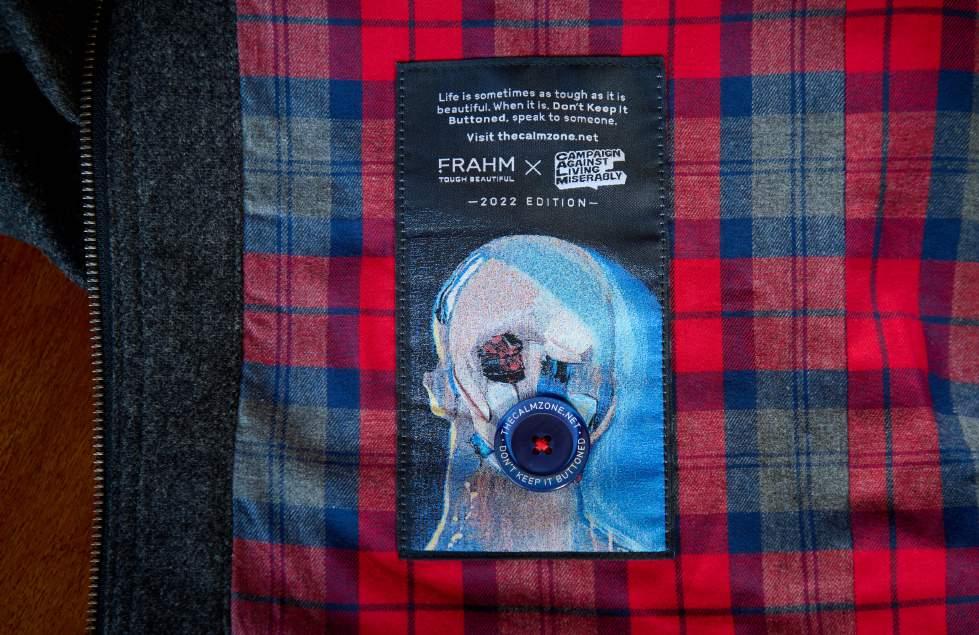
We collaborate with CALM to unite everyone against suicide, and help more folk reach out, to talk when they're struggling. CALM offers practical suggestions for all of life's problems - whether that's anxiety, relationship concerns, health worries, money worries or suicidal thoughts.
“Don’t Keep It Buttoned” is a long term initiative to remind us all to seek support when we need it, and encourage open and honest conversations about our mental health.
Every FRAHM jacket has a portrait of
someone suffering in silence sewn into it, created from the oil painting "Milkshake Tommy" by local Frome artist Jamie Gallagher, and designed by Supple Studio.

It is a reminder that life can be hard, but is beautiful. To not keep it buttoned, but to talk to someone. The button can be removed and pushed into the hand of someone you're worried about.
The 2022 edition label is created in high definition embroidery with a beautiful hand sewn button over the mouth. This man is buttoned up. Don't be.
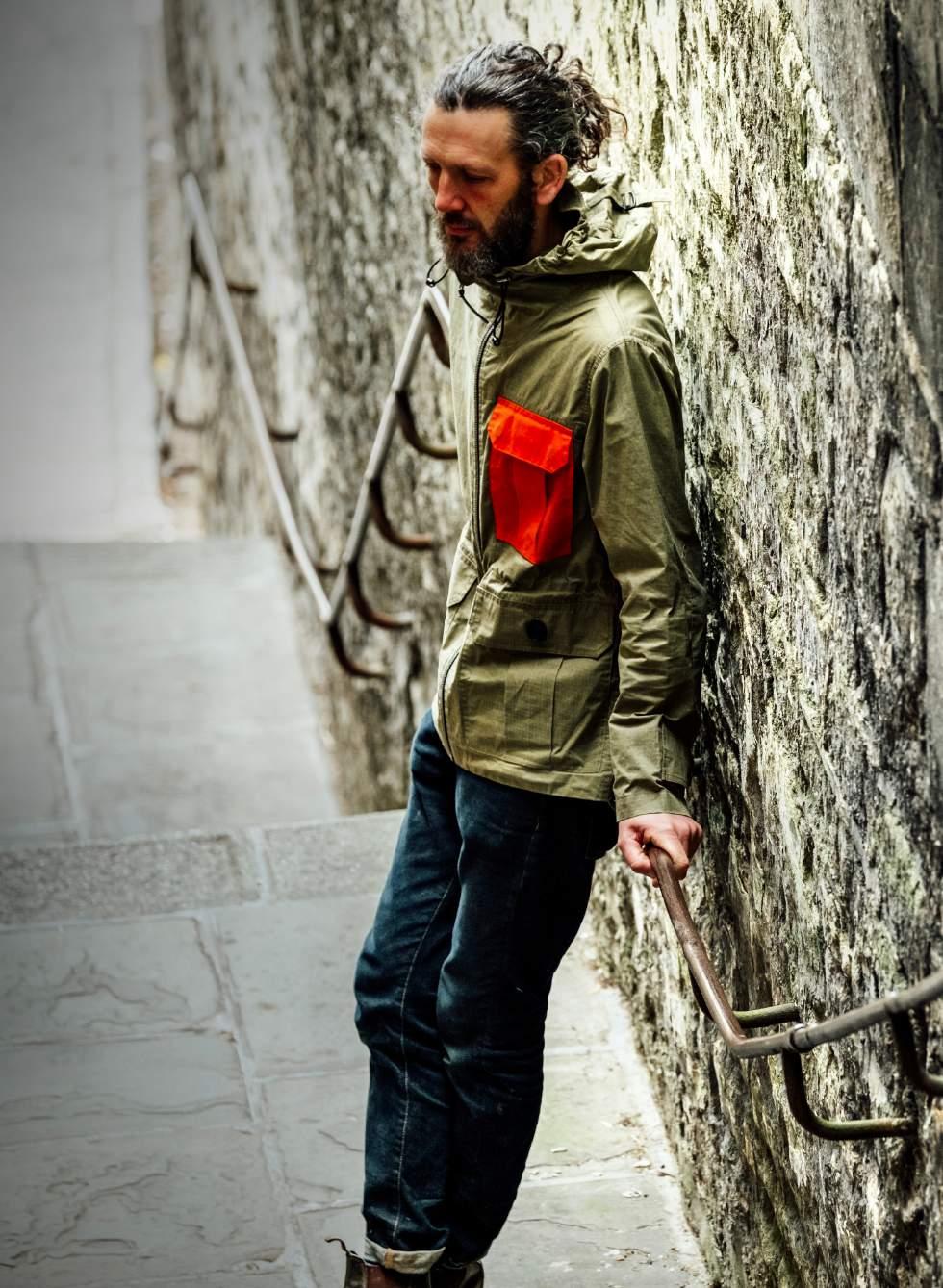
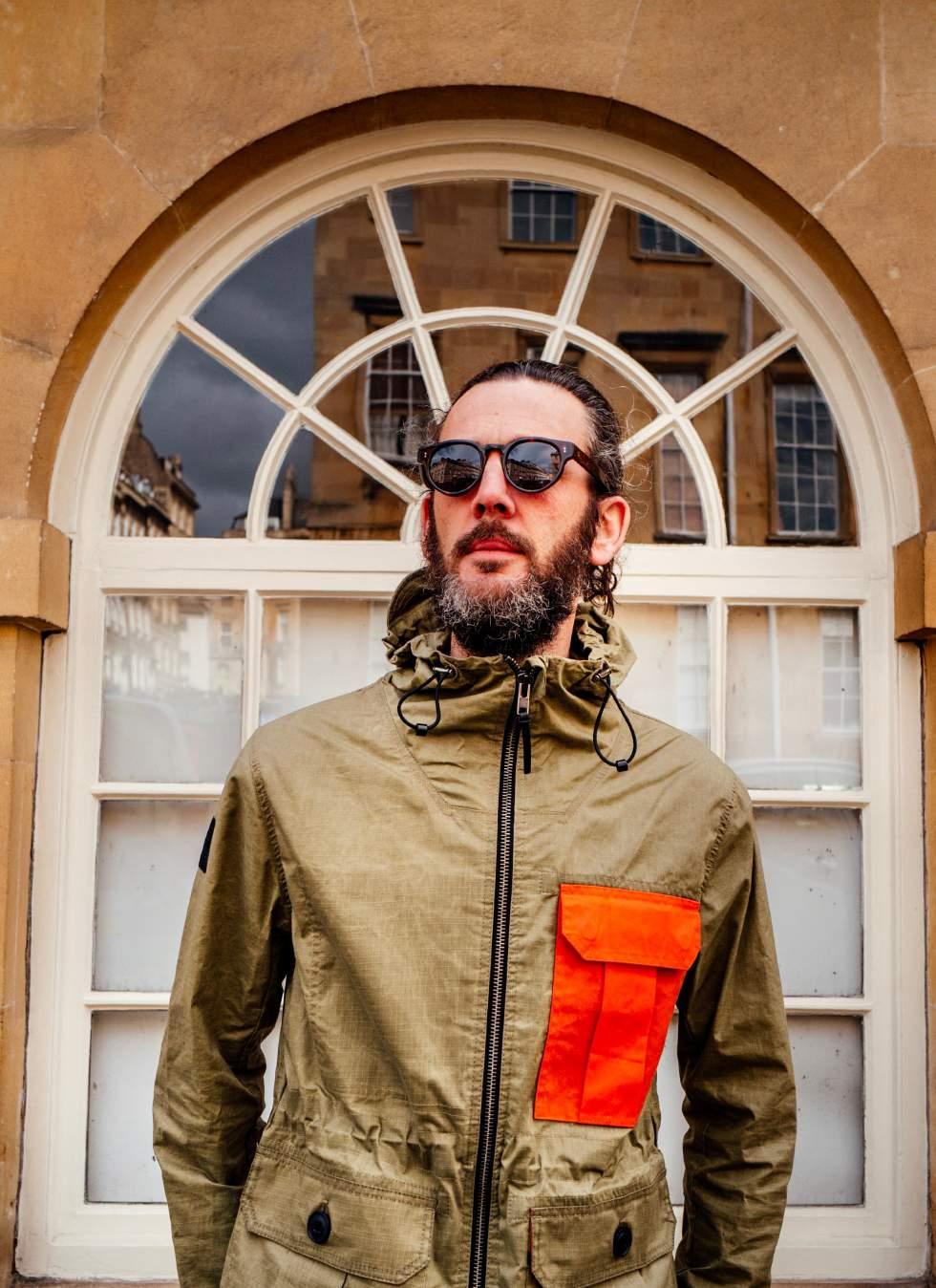
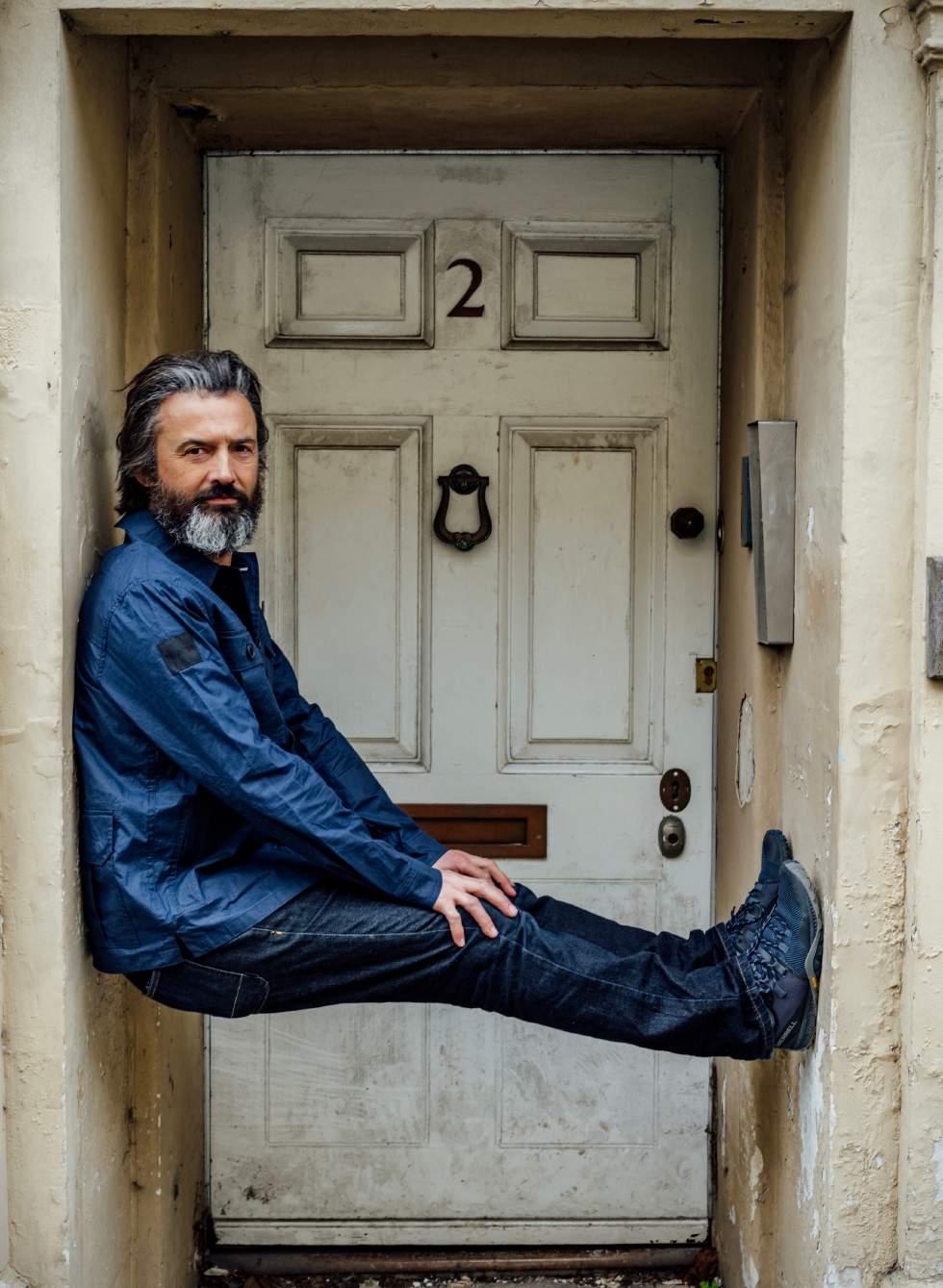



Hayley McSporran is a fashion and accessories brand focused on creating a minimalist, modular wardrobe.
Collections are designed and hand made in Glasgow with the ethos of 'Buy Less Wear More' at the foundation of the brand. Hayley wants to slow down the fashion cycle and encourage a more considered approach to consumption, boycotting the disposable attitude towards fashion by creating pieces that are designed to last.

Image credit: MA.IN Collective




Hayley offers a contemporary take on femininity through sculptural silhouettes, and a minimal approach to cut and detail. Quality, functionality, and timeliness are key in every collection.
Minimalist pieces make for maximum styling - designed to be layered with and complement your existing wardrobes effortlessly. Flexible and versatile in their simplicity, Hayley creates wardrobe essentials to last beyond the season.
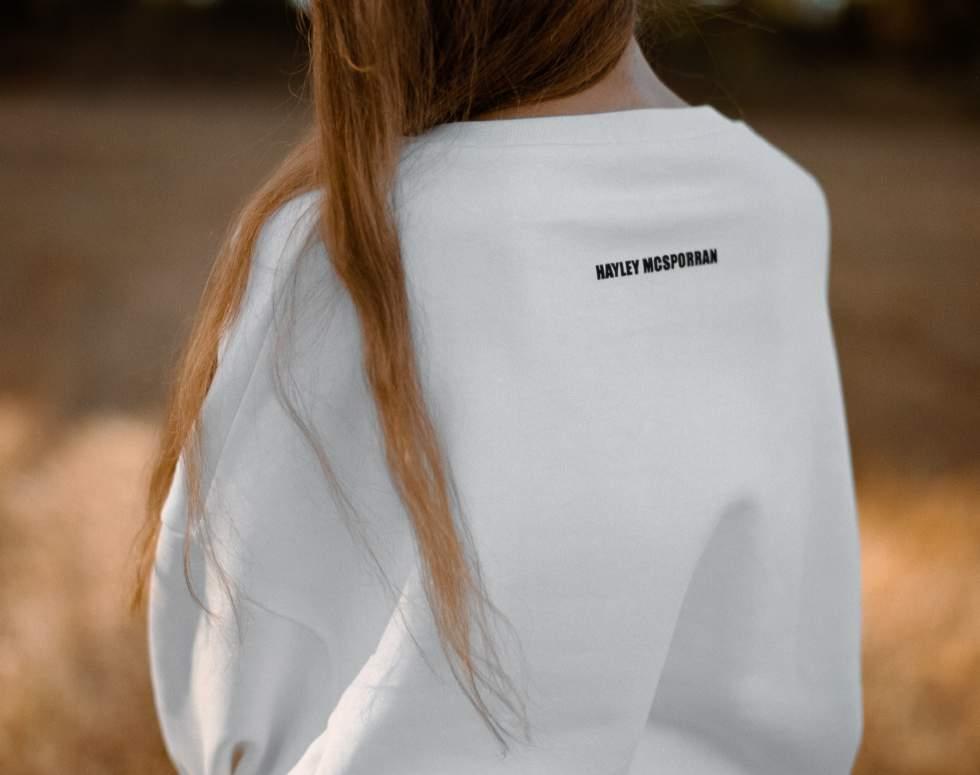
Dangerfield Mills makes quality bags and accessories and is named after one of the most famous and historic mills in Scotland. William Watson & Son established their facility in the early 1800s in Hawick the traditional epicentre of the Scottish textile industry, where it was in operation for 200 years. According to legend, it’s also the place where tweed, the most synonymously Scottish of fabrics was named.


Founder Chris Johnston started Dangerfield Mills after spending a number of years building up expertise, know-how and a cult following with a previous Glasgow-based streetwear brand. The label is driven by a passion for heritage, history and a duty to carry the legacy of quality Scottish textiles into the 21st Century. Its products are constructed with care using the best fabrics and materials, with freshness, sustainability and durability all of paramount importance.

We plan to build on existing range, with high quality practical products that keep in line with the brand's ethos. View https://dangerfieldmills.co.uk/
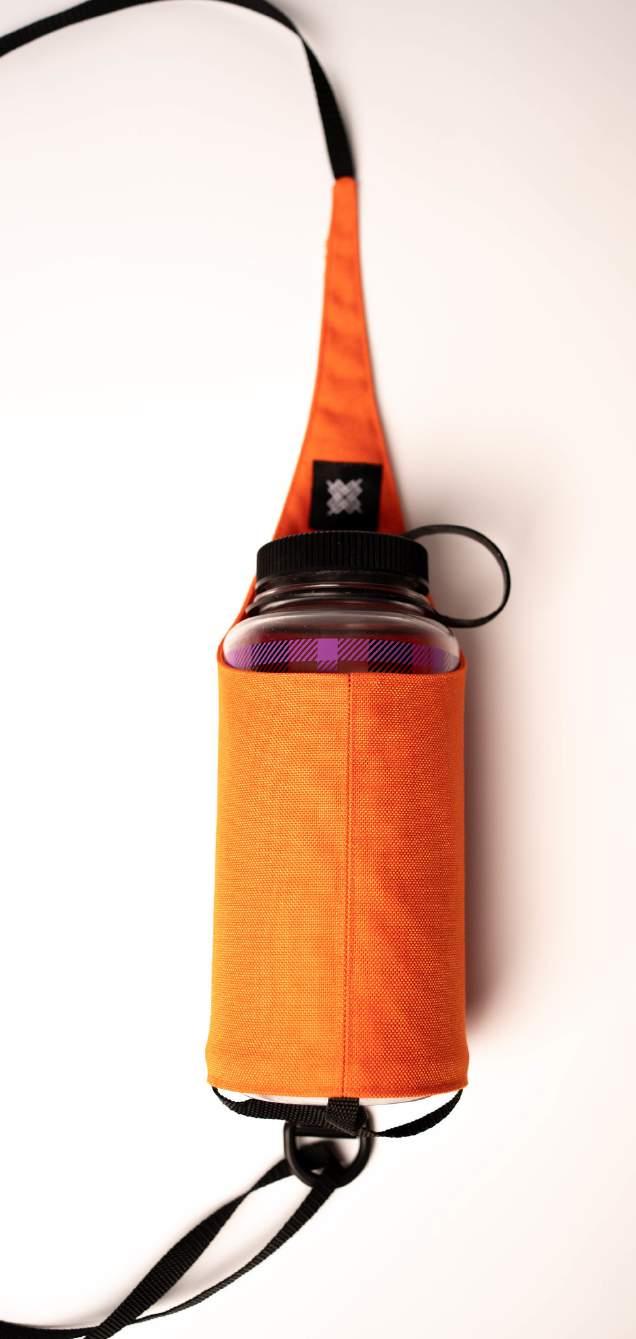
"All Dangerfield Mills products are built with practical purpose in mind, whether they are used on the hills or part of your city commute. Solid construction and high durability at its core."


For the growing followers of slow fashion, Lulu O'Connor, founder of Clothes Doctor has gathered some well deserved recognition for running her brand of sustainable clothing care, dedicated to helping people extend the life of their clothes by cleaning, protecting, repairing and altering, and nurturing their most-loved garments.

Their belief is that, due to the rise of fast fashion, consumers across the Western
world have lost touch with these important skills. There is so little information available on the possibilities for repairing garments, and care labels often default to 'dry clean only' as a catch-all for how to clean silk, cashmere, wool and many other fabrics.

With Clothes Doctor's wide variety of specialist fabric detergents, clothing care tools, accessories, and expert clothing care tips and tricks, they help people reconnect with their clothing and love their wardrobes again.
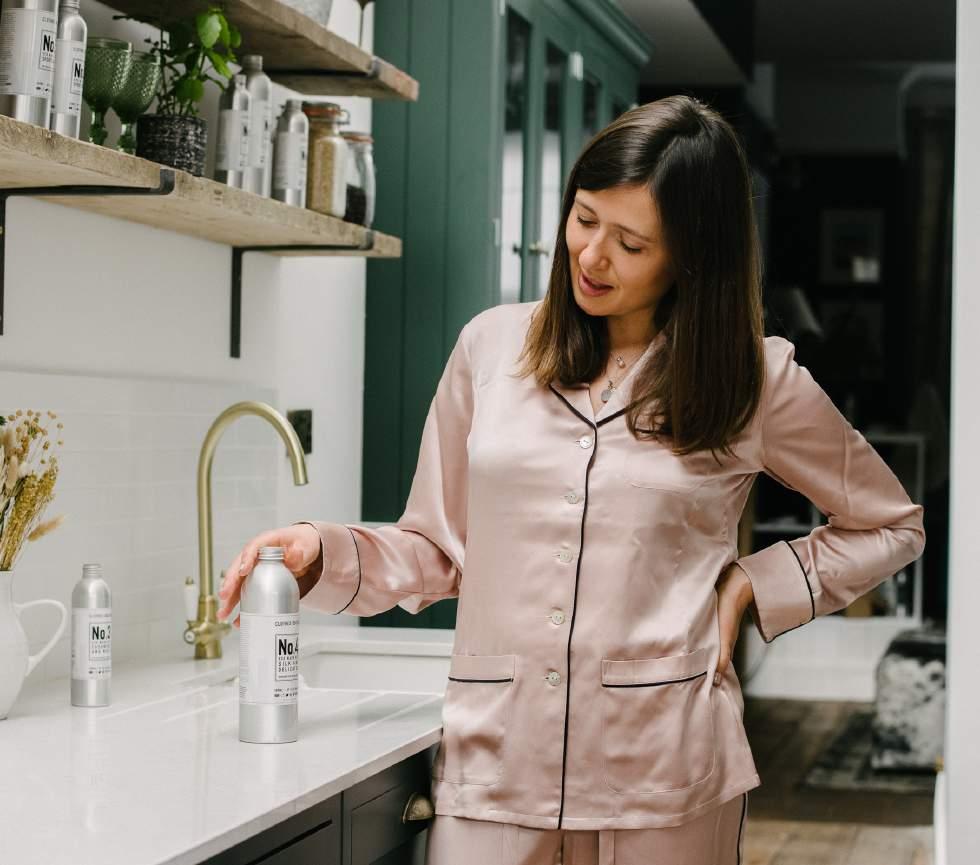
They are also proud to be plastic-free, vegan, cruelty-free, palm oil-free and made in Britain; kind to people and the planet.
Visit clothes-doctor.com
Our mission is to bring back the 'yaaaas' when you open your wardrobe, and make every new garment a friend for life, not a one hit wonder.


A showcase from our overseas industry friends. The year is 2022 and these are the brands we have eyes on..

 by Robin Clementson
by Robin Clementson
Built on the foundations of a passion for the creative process where less is considered more, Ron Dorff is a brand that continues to create the very best in premium, body-fitting sports inspired apparel. Launched more than 10 years ago, the brand, created by owner Claus Lindorff, maintains a stead-fast design acumen that pays homage to the 1970s-80s classic sportswear and cleverly fuses it together with forward-thinking products for the modern-day audience.
Growing up in Sweden, Lindorff left for the UK to study post-war and contemporary art at Sotheby’s before embarking on a short-lived career in investment banking.
This did however lead him to moving to Paris, where his business now resides. Following working in Advertising with luxury brands which included Louis Vuitton and Armani, Lindorff realised his passion sat at the front end of the creative process, soon realising that something needed to be done around classic sportswear must-haves for men.
“Ten years ago it was very difficult to find simple, functional and well-cut gym wear.” says Lindorff.
“There were huge logos everywhere, colours were crazy and most products were badly cut. We launched Ron Dorff with the idea that less is more and that we should focus on immaculate cuts, low-key, masculine colours and no logos. Our first mini collection included a T-shirt, a sweatshirt, a pair of tennis shorts, swim shorts, and jogging trousers. All five were proposed in black, navy, white or grey mélange.”
Carving its own niche in the market, Ron Dorff did take some inspiration from legendary sportswear brands from the 70s and 80s with style icons including Steve McQueen and Robert Redford.
Indeed that lean towards a heritage styling is given a nod in the latest SS22 Collection which embraces the silhouettes seen in the 80s oncourt action at Flushing Meadows and Roland Garros, giving them an upgrade to present chic urban wear incorporating colours including Klein Blue, Grassy green and Racing red in addition to the classic navy, white and black.
“Our loungewear collection also embodies these codes and colours integrating new seasonal retro styles such as the Sports YFront Briefs, Bi-Coloured Tank Tops and TShirts with contrasting details,” adds Lindorff.
With around 200 items each season, the core Ron Dorff offering of premium sportswear essentials that never change in cut or fabric from season to season, is still very relevant. This adheres to the knowledge that once men find their perfect piece, they tend to stick with it.
Hand-in-hand with a wide product offering comes an unrivalled attention to detail and discipline, where Ron Dorff offers not only a stylish option for men of all ages, but one that will stand the test of time.
“The challenge with a minimalist concept like ours, is that every little error can be spotted. This approach also requires the absolute best quality, whatever the fabric.
“We have taken a journey over the last 10 years where our focus on gym and sportswear has evolved into athleisure, where customers can wear our products at home, on the street or even at work."
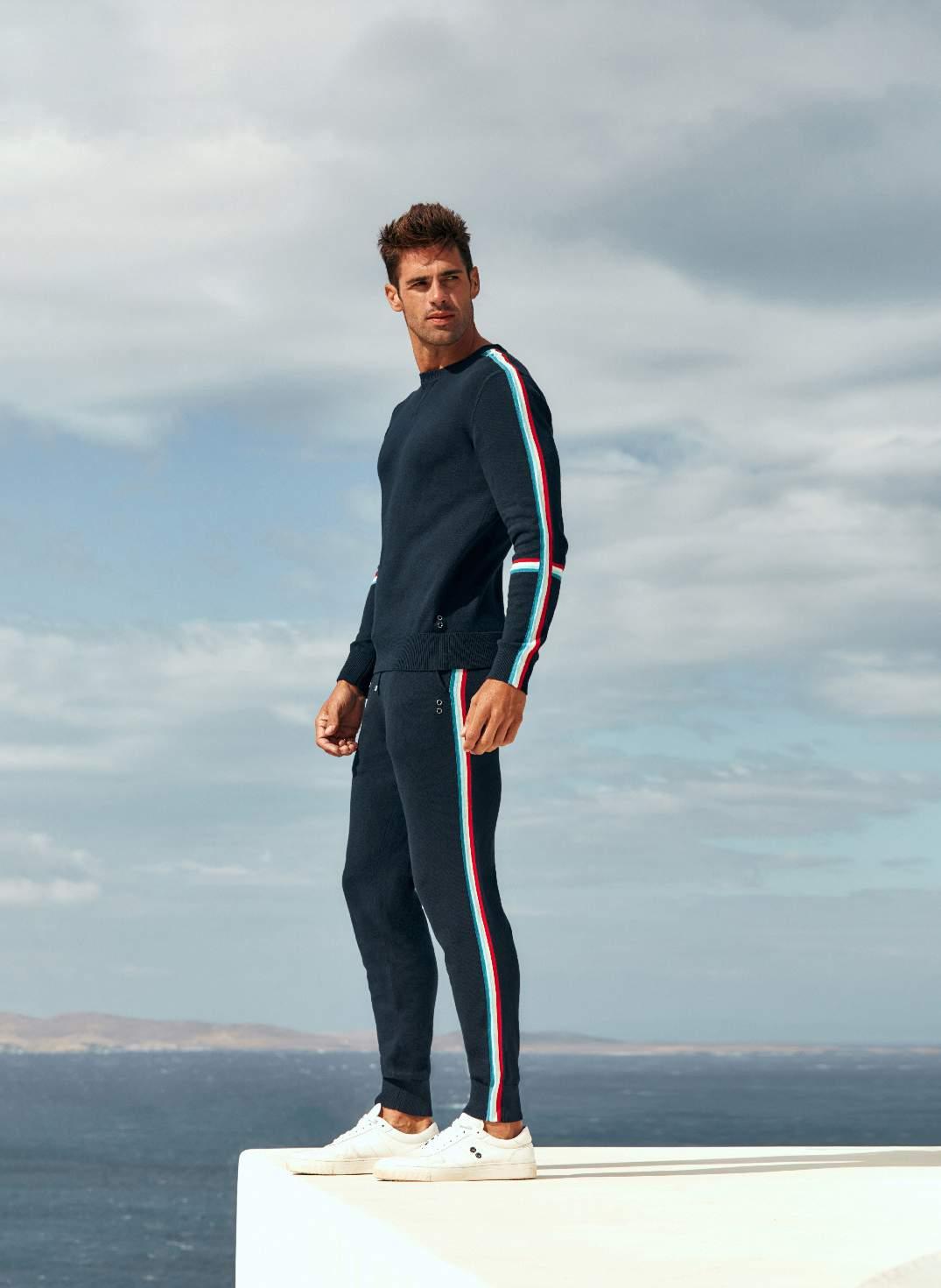

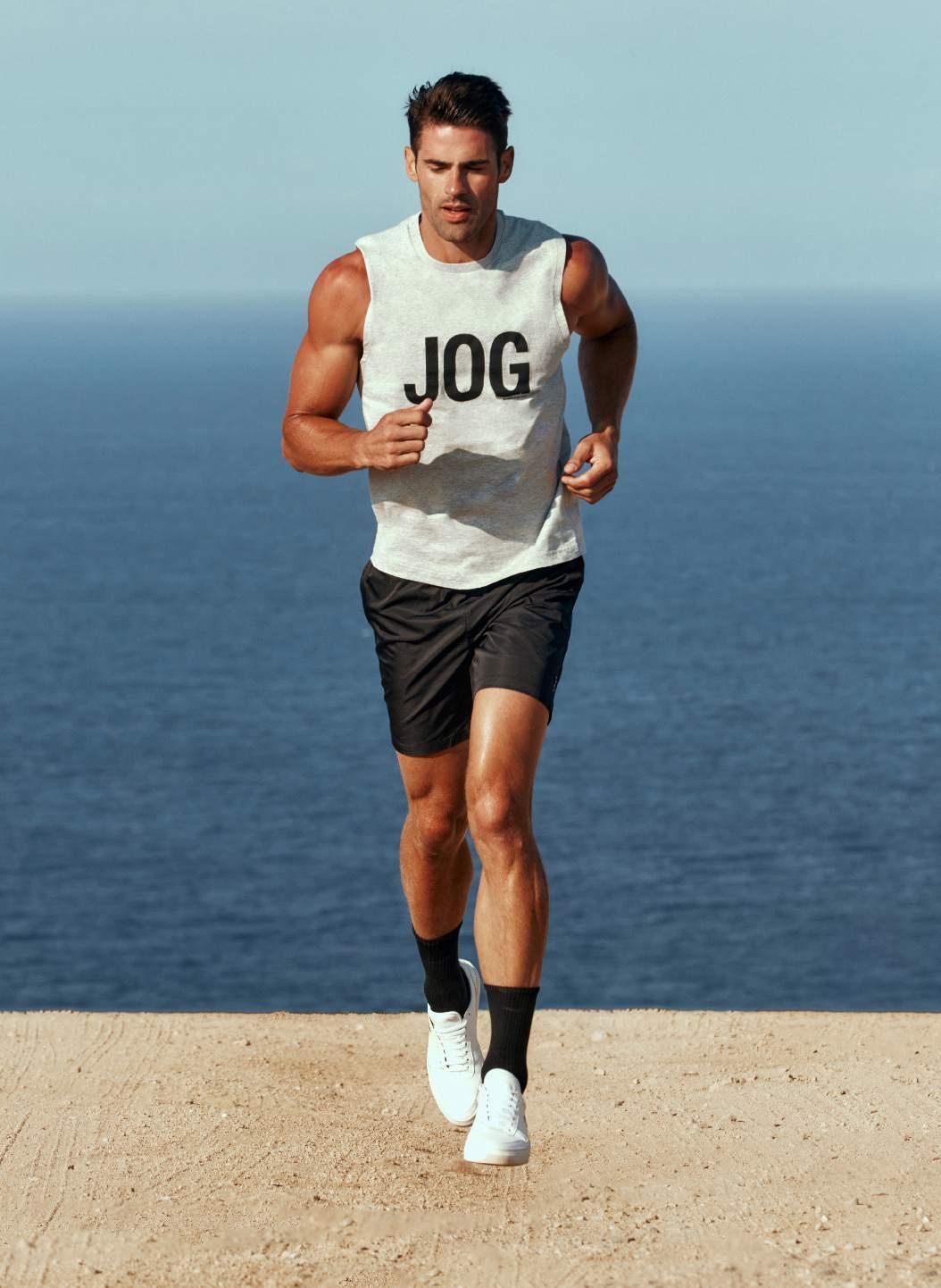
We work with organic cotton, pure cashmere and a wide variety of noble, natural blends such as cotton-silk and cotton-cashmere. 80% of our clothing line is made in Portugal, Italy and France and our body care range is made 100% in Sweden,” says Lindorff.
With outstanding quality must come a price point and with the launch of its Pure Sports Cashmere Collection, Lindorff admits he felt a little unnerved about the core client buying into products that tip the £300 mark.
“We weren’t sure if our typical client would follow. However, the very first season the collection became the top seller and has been a bestseller ever since.
“60% of our collection is part of the permanent RD Essentials and never put on sale. Our clients are not afraid to pay full price and move up in a new price range as long as the quality is there. They know and understand how Ron Dorff operates. We don’t cut corners,” adds Dorff.
Notably recognised in all key destinations for its underwear range and swimwear in the summer, the Ron Dorff label perhaps has some leg-work to do on the wider offer, however, the new cashmere collection has taken over as a best seller for the colder months, which is a positive sign.
So has the recent global melt down from the pandemic had much of an impact on the brand?
“What started in 2020 made online sales go through the roof as people were spending their days in front of Zoom. A suit and tie would not do it, nor a random T-shirt. We were lucky to have a product that was spot on for a new
reality which made so many brands suffer badly over the last two years,” explains Lindorff.
“With light at the end of the tunnel, I believe working from home is here to stay in one form or another and I believe so will a more casual but chic dress code whether working from home or back in the office.”
Identifying their target audience to be the urban man in his 30s or 40s with a good salary, health conscious and a frequent traveller, the Ron Dorff customer is also savvy in buying regularly online; “He is not a fashion slave but fashion conscious. He is happy to pay the price as long as the quality is there and remains brand loyal.
“From our qualitative studies, we have found that a majority of our clients fit into this description and interestingly have a lot in common from Paris to Berlin and from London to New York.”
With the US proving to be the brand’s number one market, Ron Dorff is looking to extend its New York offer but also fully believes in the Omni-Channel approach, where its stores support the activity online for a bigger and better overall experience and interaction.
“I believe in taking one step at a time, so once we have given a sufficient focus on the US and European territories, it would be good to look at the Middle East and Asia where we already have some traction,” concludes Lindorff.
Visit https://uk.rondorff.com/


Wearing caps from a young age has been the organic catalyst for Varsity Headwear founders Alex and Seb Adams to create their own premium brand.

The brothers, with five years in-between and both with an entrepreneurial spirit, have come together from very different career paths to create what is fast becoming one of the best cap brands available. Where an after-thought accessory has become a must-have key fashion staple.
That shift from a solid sportswear accessory to one more aligned with fashion is well on its way with stores in their home city of Oslo, French holiday hotspot Saint Tropez and an ever-growing very cool pop-up concept’s, which includes the fleet of Italian Piaggio motor vehicles. The brand is also available via Selfridges and Lane Crawford.
Obsessed with caps from a young age, it was vacations to the US and bringing back baseball caps from the likes of the Yankees and Red Sox which really started the love affair. “We adored these authentic US baseball caps and it was quite the thing to bring them back after visiting the States, all our friends used to do it too,” says Alex.
Over time and after starting to regularly wear caps as part of their everyday attire, there was a realisation that perfect fitting caps was actually an issue and that most caps were worn as an after-thought, to keep untidy hair at bay or for sporting, more casual reasons.
“For me personally, I always found it hard to find caps that fitted well as I have a larger sized head,” says Seb. “So with that me and Alex started to discuss creating a cap business that had a simple sizing structure, that worked for both men and women and that took a more premium focus - a more sartorial aesthetic if you like.”
With Seb starting out with a career in design for an architectural practice and with Alex studying and working in the business and finance industry and with both having lived and worked overseas, Seb joined Alex back in Oslo where the idea started to take shape. After more than a year of planning, design and development, Varsity Headwear took its first steps.
Working together in what is now one of their meeting rooms, the brothers had initially started to work with a machine to achieve 3D embroidery for the caps and would make these with bespoke initials for
“We design our caps with the idea that they are one of the first things you think about when putting an outfit together,” says Alex “Not dressing from the feet upwards, but from the head downwards.”
their customers, which often came via friends and then also then via word of mouth. However, it was later realised that it was plain caps that were favourable, so that part of the business was developed with premium fabrics still very much a key element.
“It is and still is a learning process for us,” says Alex “Everything we do is rigorously tried and tested in terms of shapes, fabrics and sizes. “We work with some of the best fabric manufacturers in the world from Italy and Loro Piana, to Halley Stevensons, in Scotland, and with fabrics ranging from wool and cashmere through to oilskin. We are now at a really interesting stage where the brand and our efforts are starting to gain recognition.”
With two completely different personalities, which both brothers say compliment one another, the Varsity Headwear brand is built on an openness and transparency, where all employees get to have their say and having a voice is encouraged and celebrated. “Every decision is considered and discussed with our employees and me and my brother are equal in the final decision making,” says Alex. “We trust each other 100% and I think that is one of the most important parts to working and running a business with a sibling,” adds Seb.

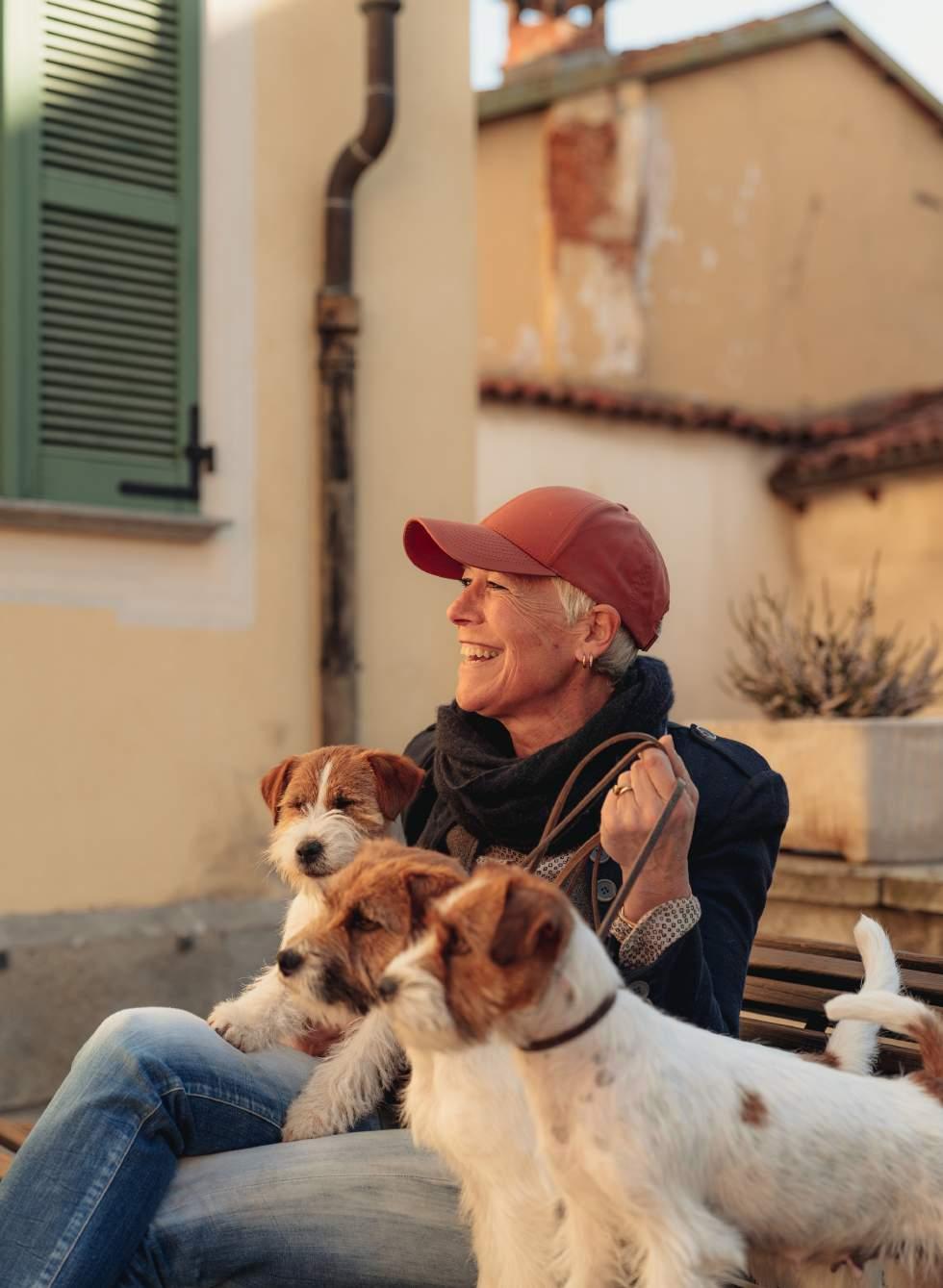
After opening the first store in Oslo in 2013 and then taking a punt on a space in Saint Tropez in 2017, where they have a family holiday home, the brothers, their team and at times the calling upon of friends and family, have come together to realise what is now widely regarded as an outstanding product that stands the test of time.
Varsity continues to work with customers to
continuously evolve their brand and to refine products for an eclectic mix of lifestyles throughout the year.
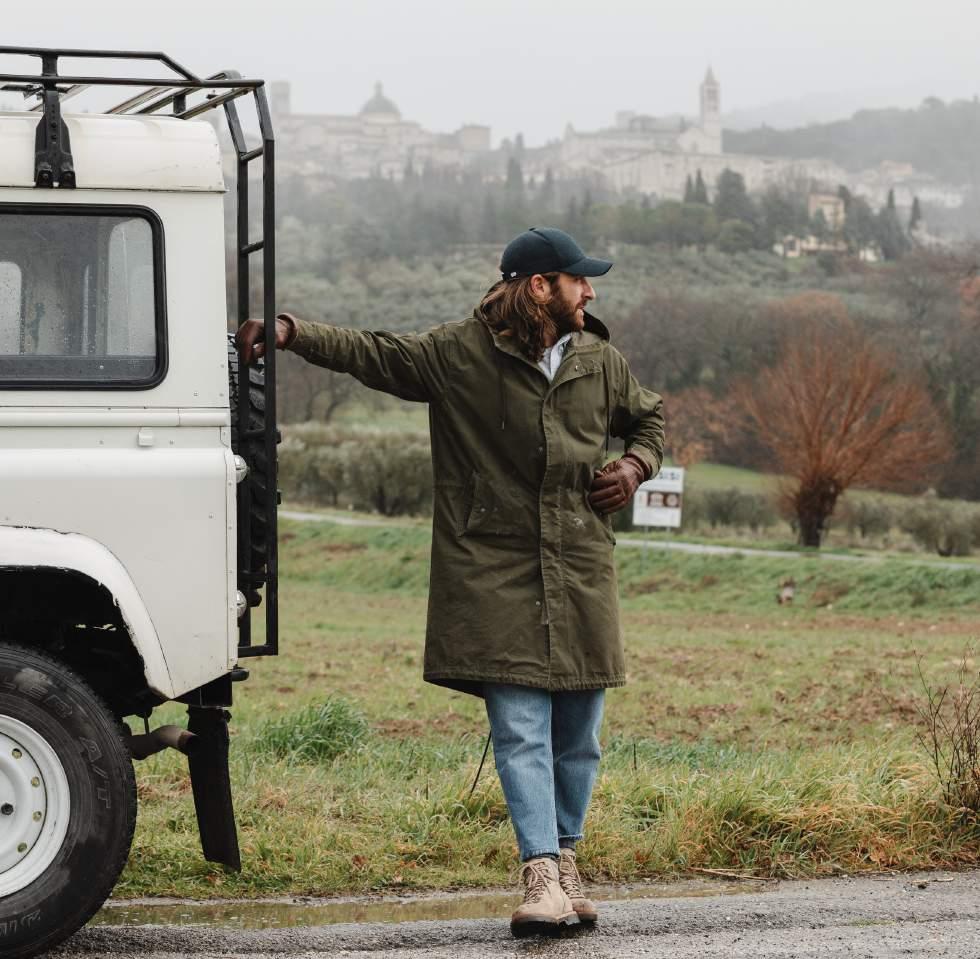

OSWEN is a new shoe brand hailing from the cultural hub of Cologne. Brought to us by Mancunian and shoe aficionado, Paul Tudor, whose experience reaches across big names including adidas and Puma, OSWEN takes a classic, music inspired aesthetic and fuses together with forward-thinking materials and design for a new generation. Here we speak to the man behind the name.

Can you tell me a little about your background and where you come from?
I’m originally from Manchester in the UK and was really lucky to grow up in an incredible, metropolitan city with a rich industrial history and culture. I grew up there during a period of amazing creativity and music culture. I think it’s the source of my own creativity and pioneering spirit. To think differently and fight for what you believe in. I lived in Manchester until I moved to Germany to join Puma at the HQ in Herzogenaurach around 2010. This was a huge step for me but one which has defined my career.
What did you go on to study and how did this relate to the career you ended up in?
I went to a regular comprehensive school in Manchester, so a career in fashion or design was never a conversation or part of the curriculum. I always had a natural creativity and excelled in art and anything creative and I went on to University to study Fashion Design for 4 years on the back of my art teacher telling me to try it as I could turn my creative drawing into something physical. It suited me perfectly (I was one of 2 guys with 28 girls on the course!). I could create something that I had in my head or on paper and turn it into something physical which I loved. I also enjoyed the process of sketching the product and the many steps of the process. I’m quite organised so I enjoyed the structure and planning, so you can probably guess now why I have lived in Germany for many years. A structured base for me gives the space for creativity above.
You have worked for many years in footwear design. Can you tell us a little more about the journey?

Creativity and Design has just always been my strength. I think real creatives can visualise products. It’s like a creative Sixth Sense. I was in design for many years and went as far as I felt I could go and then moved onto Product Management, Senior and Head of Footwear roles and functions. I just wanted to carry on learning, experiencing and developing myself.
It’s been a natural progression and as it's such a collaborative and creative process, it’s something I’ve really enjoyed. I think when you love and have a passion for what you do, progression comes relatively quickly and I always put everything into what I do. I am fully committed to the Brands I worked for and committed to being successful in whatever I do. I really have to go all in or not at all.
How long have you lived in Cologne and how does life in Germany differ from back here in the UK?
I’ve lived in Germany many years and always enjoyed being here. I’ve always been attracted to German culture, nature and the need to be outdoors. Cologne is an incredible city, rich with history, architecture and tradition where good beer, bakeries, eating on terraces, meeting at the kiosk and cycling is embraced within its DNA.
The difference with the UK is the culture and lifestyle. People in Germany don’t live for the weekends, they enjoy living life. They value fitness, family, the outdoors and culture. Getting together with friends and families over dinner or drinks any time of the week.
Plus, we cycle everywhere which I love. You actually don’t need to own a car in Cologne, as I cycle everywhere. We also eat and shop daily and locally. Means you really get a taste of seasonality and the weather. What’s in season and what’s not.
Big names such as adidas, Puma and Birkenstock sit on your resume, how have these brands in particular influenced what you are doing with OSWEN?
I honestly loved working for these brands and learned so much from the experience. Being around the best-inclass individuals has been really beneficial to my learning. My time with adidas was amazing and defining. Wonderful working environment and culture. I had a great boss, Torben Schumacher, who had a great management and motivational, structured skill who I learnt a lot from.
I learnt a lot about building a concept, storytelling with product, product lifecycle, activation, collaboration and teamwork. All the many functions and people within the process. Particularly, as you are working with and collaborating with people from many backgrounds. My team alone included colleagues from Italy, Germany, UK and France, so you really get to learn about people and culture.
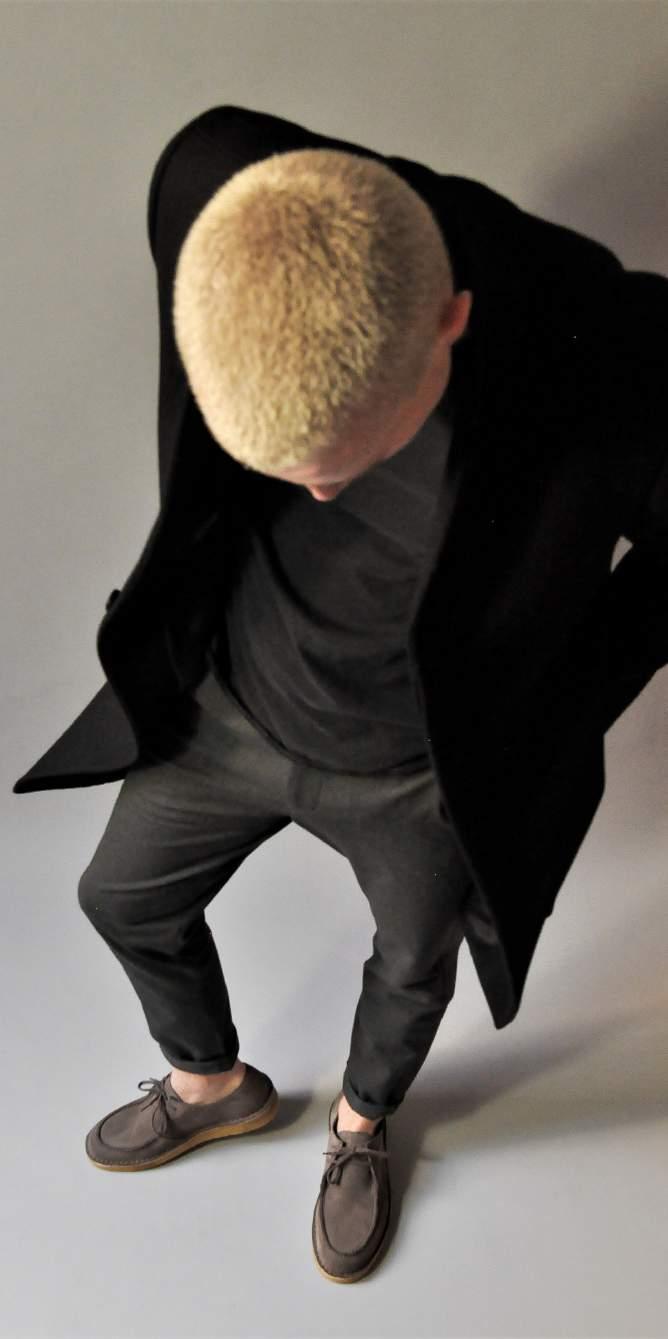
Tell us about OSWEN. What inspired you to start your own brand and what are you looking to achieve?
It’s funny actually and relatively simple. It happened literally overnight! I had an interview for a large international footwear brand and they actually asked me why I wanted to join them as I had too much experience and had worked for much bigger brands. After some further conversation, and when I put the phone down, I actually said to myself ‘ok, that’s enough’ and knew right then I had to do something for myself. This was January 2021. Oswen launched in September 2021. I have experience in all the functions I had with the brands I worked with before so it came easy.
I now cover design, photography, key account management, range planning, line and price architecture, sales, social media, website design, everything of the process. I love it! It’s hard work and there are no days off, but it’s worth every late night and early morning when I see somebody wearing a pair of Oswen. I just want to connect with consumers with something more meaningful.
Can you talk us through the design and silhouettes that you carry including the use of cork and crepe souls and the Unisex business model?
I learnt a lot during my past experience in regards to product lifecycle and architecture. To keep things simple. Customers need to be driven into a brand’s direction and DNA. To be part of the journey. Too many shoes in a range can be confusing and lack focus, confidence and storytelling. We initially created 3 key silhouettes and only used 4 key materials. Crepe, Cork, Traceable Leather and Vegan alternatives.
There are so many benefits to natural materials such as Cork for example. It’s 100% natural, reusable and recyclable with benefits such as being lightweight, hypoallergenic, antistatic and odour-free. It also offers protection against allergies as it does not absorb dust. We use cork directly on the footbed to take advantage of all the benefits against the foot.
Crepe is similar. It’s a completely natural product which we use on our outsoles. Compared to plastic or synthetic outsoles, which can stifle the foot and derive from processing pollutants, the natural ‘sole crepe’ soles have many benefits. Ecological, recyclable, resistant to abrasion, very elastic and flexible and water-proof. It’s also super comfortable for a walking experience.
Because of my experience, I’ve also worked with some great factories. I connected with a factory in Portugal who I knew had great products having worked with them before. It was a good match for Oswen and the factory owner is now a shareholder in the brand, which also brings many benefits to our service model. I’m also a big sneaker fan but I wanted to be as natural as possible and move away from the use of synthetics and plastic by only using crepe, cork, and leather. I am actually going to Portugal soon to watch and video the farmers stripping the cork trees which I’m really looking forward to.
For the layman, what is the USP and why buy OSWEN as opposed to other brands with a ’similar’ aesthetic?
I feel there is nobody out there doing, or can do, what we do. We only have 3 core models and 4 core materials and are able to offer Unisex, genderless shoes.

We use 100% plastic free packaging. We also developed a 2-in-1 shoe and courier box and a beautiful box experience. We only manufacture in Portugal so we are local and agile. We have short production, delivery and lead times so we can act quickly and efficiently. We are planning on being a completely plastic free brand in 2023.
We are already almost there and are working on a rubber milk to replace the EVA which is currently used to add cushioning in the footbed.
We carry stock of all our models. This means consumers can get shoes within 2-3 days from an order on-line and key accounts ‘instore’ in 1 to 2 week from order. We have a great service model.
We are a modern, agile brand and we provide a real message with a lifestyle, super cool look in the brown shoe category and a website and social media presence which reflects our brand DNA.
When Run-D.M.C sang about ‘my adidas’ it cemented sneakers and music culture and made the Adidas superstar a footwear icon. I like to see and have those natural connections. I also listen to music all the time when I’m working. Oswen’s Instagram reflects our connection to music in our stories and reels. It just gives a sense of direction and atmosphere.
Who is your ideal wearer? Sum them up.
My ideal wearer can be anyone who chooses to wear Oswen for its values and creativity and can engage and connect with us. I see this with my teenage daughters who are embracing the 90s trend. A trend which has an androgynous, feel so I feel we are in a good place with our unisex approach. It’s really about less consumption and more experience.
How much does music influence the brand?
I’m a Mancunian. Music and fashion culture is really important and we understand the connection. Happy Mondays with flares, images of Mods in the 60s wearing Dr Martens with their shaved heads. The hair styles and fashion are all connected to music culture. It’s important to understand the connection of music, fashion and culture.
They are naturally connected and reflect each other. Music and fashion trends are also connected to footwear.
Longevity and something more meaningful and I feel our consumer can connect with us and our message. An inclusive and constructive message for the younger generations. We have to change how we consume, how we buy products and how we engage with brands who want to make a positive change for the next generations.
This change of times post Covid, is generating a positive awareness of what is really important. Our dear ones, our natural environment, our freedom of movement, our work life balance… our fragility. We are starting a new era with Oswen, a new approach for our brand with a somewhat different action. A new and considered approach to responsibility and industry practice that will change the industry. An inclusive and positive message for future generations.
View https://oswenkoln.com/



Our Contributing editors regularly work on industry insights and have their radar turned up high for latest trends..


The landscape is changing. Creators are now driven to design and engineer apparel products more sustainably. Technology can help make a positive difference to the environment, and one technology is the development of 3D apparel design tools such as CLO3D and Browzwear V Stitcher. These 3D design tools can help creators think more clearly about crafting their products. 3D apparel design tools that use realistic visualisation are helping speed up the decision process.
Making more sustainable products is also about minimising resource consumption at each step of the production process. 3D apparel design has a real impact here. It is said to reduce sampling between 50% and 70%, which helps save precious resources. One reason for this is patterns and measurements can now be tweaked digitally, and you can see an instant result on an avatar instead of making a new prototype from scratch.
The 3D apparel design process touches on the whole creative process, from digital concept sketching to internal sellin and final consumer-facing marketing.

Imagine apparel craftsmanship. Maybe you think of a cutter measuring a client. Then chalking up a flat 2-dimensional pattern, handing over the fundamental building blocks to the tailor who manipulates the cloth into a 3-dimensional object, then a final stage of fitting to tweak the shapes to get the perfect fit over the human form.
3D apparel design brings creators back towards clothing craftsmanship, although virtually. You start with a 3D avatar in the shape of the human form with correct body proportions. You then chalk up a digital 2dimensional pattern then select the digital double of the fabric you wish to use. The digital double fabric will have similar characteristics, texture and drape to the actual material.
The next step is to stitch the patterns together virtually. Then you simulate. This is where the real magic happens in 3D apparel design. The software will translate the 2dimensional patterns into 3-dimensional objects over the avatar by virtually stitching the patterns together. The 3D design platforms will then visualise real-life apparel products with realistic shapes, proportions, textures, and drapes.
There is currently a big disconnect between using the traditional 2-dimensional flat sketch to illustrate complex 3D dimensional objects. It is hard to communicate the nuance of a garment with shapes, proportions, textures and drapes this way. It is hard for the users who are often more business-oriented to read, for example, product line managers and merchandisersone of the reasons why the industry creates many samples to show marketers how the product will be.
3D apparel design is a very different way of working as a designer. I feel more like I am creating actual products, as I am working with a human form and turning 2dimensional patterns into 3-dimensional shapes. I feel closer to the product, making me think more profoundly, and I better understand the overall development. It has also driven up my level of creativity as I am quick to manipulate pattern shapes and design lines.
I tend to visualise 3D shapes and think more like a cutter working from patterns upwards into garments. It is a different mindset to work with 3D apparel software; you need to understand garment engineering and 3D software in general. 3D technologies are ever-evolving, and you will also be constantly learning.
I first tasted 3D apparel design at Manchester Metropolitan University at the Hollings Building, known as the Toast Rack in Fallowfield. We learned to work on a very early pattern program called PAD System, and this was back in the late 90s early 2000s using large Iomega zip drives.
My deep adventure into 3D design came back in 2016 when I was working on football gear. I wanted to elevate the creation of the presentation of football kits. I personally never really liked working with illustrator flats to present clothing garments, so far away from the authentic product. Garments are complex three-dimensional objects with different characteristics, shapes, proportions, and drapes.
The 3D revolution is just starting now, and it has accelerated rapidly over the last couple of years. In the past, technology hasn't been good enough to generate high-quality garment visualisations quickly and show accurate, high-quality material visualisation to bring apparel to life. Technology is now improving rapidly.

The 3D apparel design process is a powerful tool that touches on product creation, from initial concept sketches to final consumer engagement. Now with the explosion of digital content channels (13% of new social media users each year (+520 million), according to Bastiaan Geluk (Head of Digital Fashion, INDG at Adobe Max 2021), this is a significant need to feed the machine with highquality solid imagery.
It is an inspiring time within the industry; there is a lot of positive change happening, making more sustainable products. I am very excited to see how creators elevate apparel products in unexpected ways.
Hugh Clarke is a creative, collaborative, and resourceful creator with many years of experience successfully designing and developing commercially balanced sportswear including products for several Football FIFA World Cups and the Olympics. He is a technical thinker driven by solving functional problems with a creative out-of-the-box mindset
It's the talk of the moment and here to stay. SSEAMS Trend Insights Editors, Amelia Peng, Tsveti Enslow and Hugh Clarke aim to investigate its purpose, meaning and definition in an upcoming SSEAMS exclusive trend report.
Introduction to the SSEAMS METAVERSE TREND REPORT 2022
In 2020, the world is resilient, filled with hope to see the end to the global pandemic. An uneven recovery with new frontiers, and with that, new retail business models in test phase and beyond. The concept refers to a shared virtual or digitally enhanced interactive space and is the successor to the internet age.
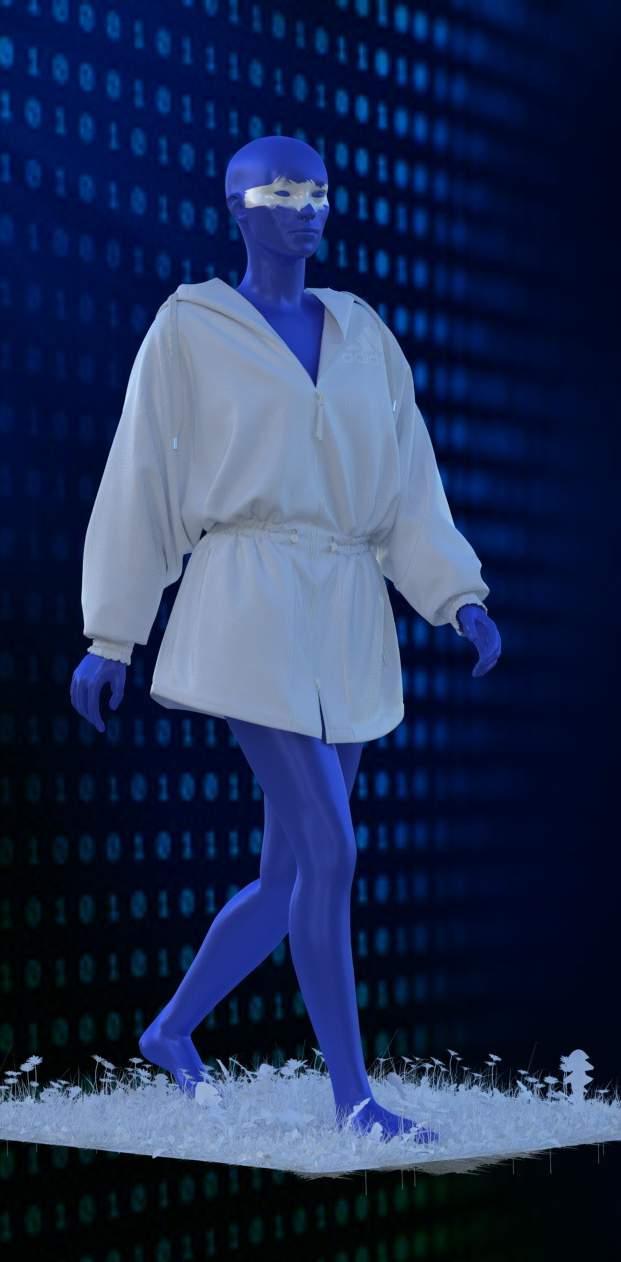
Our digital lives might soon be as important as how we appear in our physical lives, so the fashion/textile industry plays an outsized role in creativity and self-expression. Our editors shared their insights on Society, Industry, and Sustainability, and how the fashion industry can get into a metaverse mindset, and seek the advancements in sustainability to present opportunities in new unpredictable eras.
Society
Can we build a more equally distributed society in the metaverse?
As we are designing new virtual societies, inclusive representation is key. Women in the Meta, The metaverse promises great opportunities and advancements for brands and societies. We are all architects of the metaverse, and we all have a role to play in building a more equitable, diverse, inclusive, and safe virtual society.
No boundaries: Fashion + Art + Brands
Taking shape energetically, reflecting a complex world where the sustainable and the frivolous, the natural and the artificial, the real and the virtual all interact.
Digital transformation: virtual nor reality: no fabric, no waste, right?
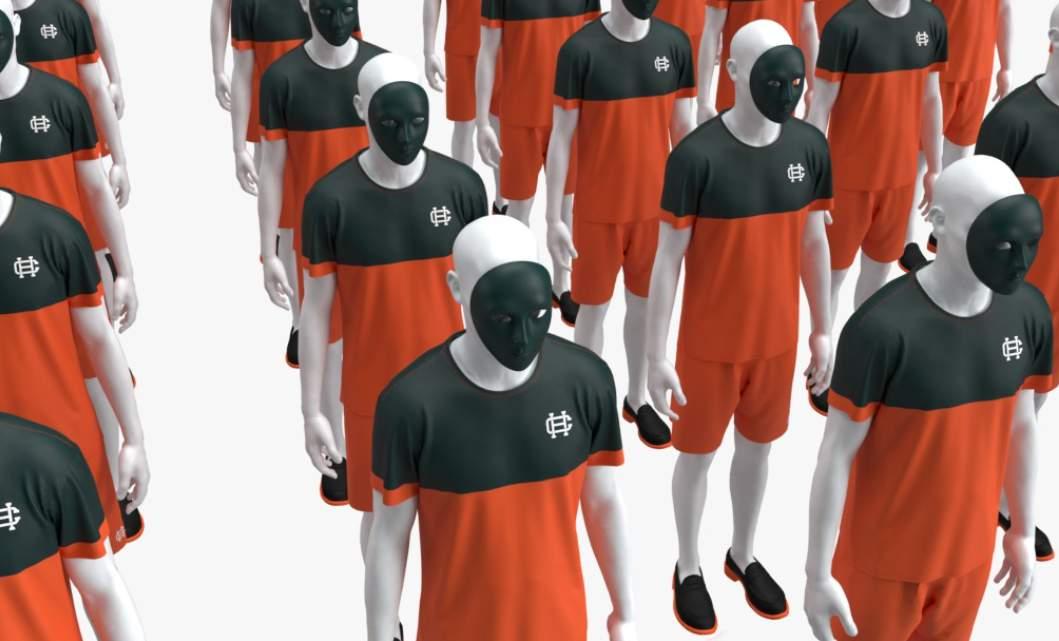
Increased textile innovation from consumers demand to new supply-chain opportunities. Metaverse Mindset - As consumers spend more time online and the hype around the metaverse continues to cascade into virtual goods, fashion leaders will unlock new ways of engaging with high-value younger cohorts, to capture untapped value streams
METAVERSE
REPORT
LAUNCHING 1ST JUNE.
To connect with our Trend & Cultural Insights team, say hello@sseams.co
Image credit: Elliott HepworthImagecredit:@ard_draw
 By Andrew Dudgeon
By Andrew Dudgeon
With over 15 years experience working brand side as an apparel designer, clearly conveying messaging and the ability to tell unique stories has always been a vital part of the role. Illustration proved an easily adaptable way to visualise concepts, create relatable narratives and generate excitement around ideas, projects and products. Add to that the fact that so many people love visuals and eventually it became a key part of my designers toolkit.
The more that I used the medium, first through traditional pen and paper and then freehand digital hand drawing, the more my work gained attention via an expanding social media following (@ard draw). The result was a stream of commissions, a growing international client base and the opportunity to work with some of the industries best lifestyle, sports and fashion brands including Aimé Leon Dore, New Balance
Image credit: Elliott Hepworth



Football, Beams Golf X Radda (collaboration) and Hypebeast on t-shirt graphics, social media assets, lookbook illustrations and article features.

All new projects are bespoke. From early discussions around the project goal, through regular progress updates, sharing development stages and the delivery of the finished illustration (including any accompanying process videos), each artwork is a partnership that merges the clients unique identity with my distinct style to tell the story of the brand.
Imagecredit:@ard_draw
About: Andrew is an award winning apparel designer and freehand digital illustrator with an immersive, progressive and process driven approach to design, storytelling and illustration. He has over 15 years experience working on extreme conditions technical apparel through to elite performance wear, to lifestyle/sportswear crossover product.
Get in touch to discuss a commission project.
Insta: @ard draw
LOCATION: GLENROTHES, FIFE
It's fair to say it took a global pandemic (!) to bring the team at SSEAMS together and even then it ended up being a virtual coming together for 2 years in lockdown.
Matthew Abbott, Diane Richardson, Julian Ritchie and Ruth Kelly came together in March 2020 pulling on a catalogue of multidisciplinary skills ranging from brand strategy, raw materials innovation, concept direction, and design and development expertise, with an idea to offer a 'one stop shop' to their industry network. It appears to have worked out and the team collaborate with private clients who require a bespoke helping hand to navigate the apparel industries rich tapestry!
Fast forward to 2022 and the two UK based colleagues, Diane and Matthew head up SSEAMS studio. As well as overseas partner work, this duo have embarked on a project closer to home and closer to their hearts..

A meeting of minds with a highly skilled garment manufacturer in Fife addresses the above, and we are truly excited to partner with Seahawk Apparel, and a chance to deliver Made in Scotland premium apparel to the industry set. Taking Seahawk’s heritage in manufacturing workwear, we will focus on two product categories; Outerwear and Trousers. Learnings from overseas manufacturing will also be applied to service the various needs of our brand clients.
craftsmanship
Knowing the current state of the apparel industry and its’ supply chain issues, we believe this is the best time to offer onshore manufacturing to our industry friends. We look forward to introducing you to the factory.
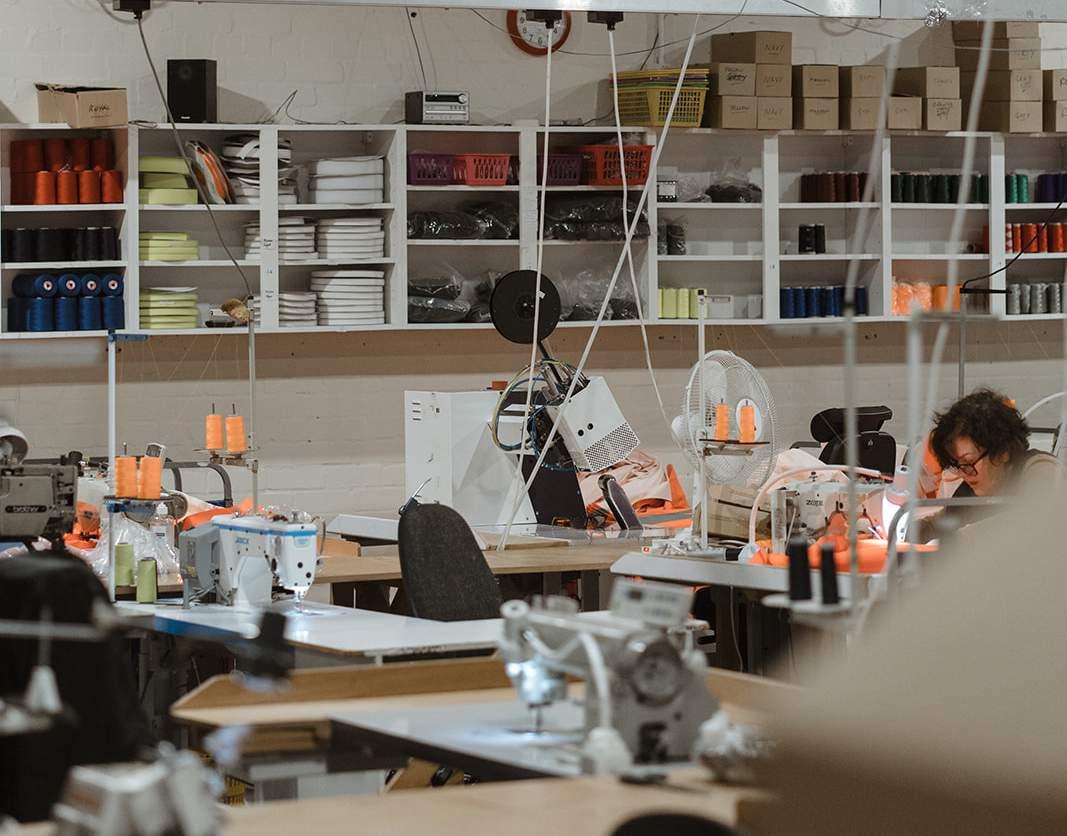
We believe in the modern heritage and
in this area and fully support the growth of Scottish garment manufacturing.Image credit: Otago Street Collective



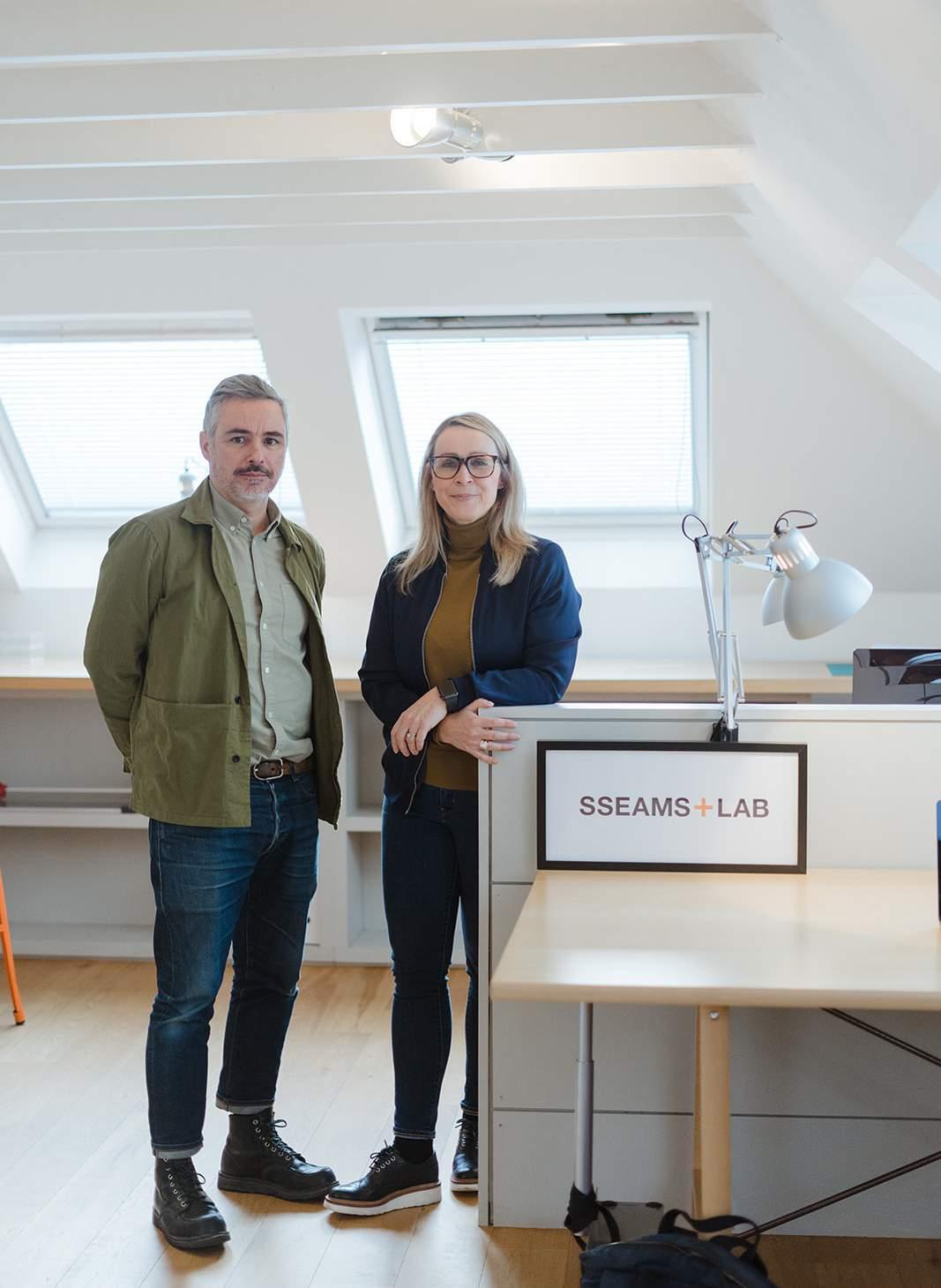
"It's time to invest back into Scottish garment manufacturing again and catch up with the weaving and knitting communities."
I’m a freelance illustrator with a real passion for clothing. My work is a celebration of great clothing and the people who like to wear it.

Inspiration comes to me from everywhere, including from the people I follow on Instagram. Depending on the style of illustration I’m producing, I tend to do a few freehand sketches using good old pencil and paper first, then either scan or digitally reproduce the draft I like best on Procreate or Illustrator. From there, I produce the line work, and base colours. I will then add further layers of detail including texture, shading, etc. based on the clients’ needs. I usually add any background details at the end where they help the subject ‘pop’.
My goals for the rest of 2022 are to continue producing eye-catching illustrations to help companies promote their products, to work with a few of my personal bucket list of companies, and continue making friends and building relationships within the industry. I’ve also been producing freehand illustrations for T-shirts lately which has been a lot of fun, so more of that would be great, too.


SSEAMS champions emerging talent and asked Simon to illustrate a few of the 3rd issue brand contributors..
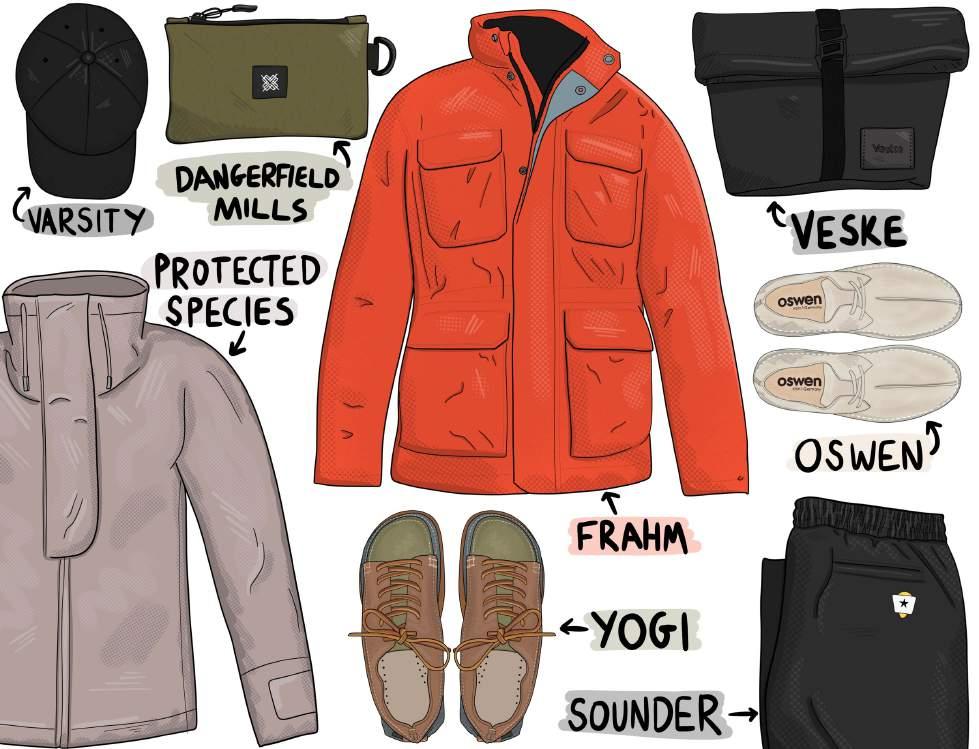
Follow Simon's work... insta: @deliberateindifference
SSEAMS studio is located in Scotland and we are surrounded by talented creatives from many different walks of life. The common thread... We all care about the provenance, make, quality, and the care and attention that goes into the process of making a product, whatever that product is.
Like you, we love a quality, independent business so we invited Dear Green coffee roasters, The Dundonald Guesthouse & Cottage, and Elliott's, to share their stories with us. We are confident you will put them on your visit list..

We also favour visiting places off the beaten track so invited Photographers Elliott Hepworth and Scott Duncan to share their escapes with us.
Get your togs on and visit a few of our favourite places in this fine part of the world..
SSEAMSstudio,Scotland
Theoryis,we dresswith purposeaswe havesomewhere togo.
Dear Green Coffee Roasters is one of the SSEAMS team favourite caffeine boosts. We invited them to tell us about their brand ethos...
Established in 2011, Dear Green Coffee Roasters is a coffee roaster and supplier of exclusively 'speciality' grade coffee beans. Taking their name from their home city of Glasgow, known as ‘The Dear Green Place.'
We were established in 2011 from a place of passion and of ethical frustration! Our practices today reflect our founding values and continue to contribute to the bigger picture. At Dear Green our core values were never decided upon by a 'Corporate and Social Responsibility' statement, they have been ingrained in everyday practices from the very start thanks to the experiences, beliefs, and standards of our founder and the fantastic team who have been hand-picked to grow our business.
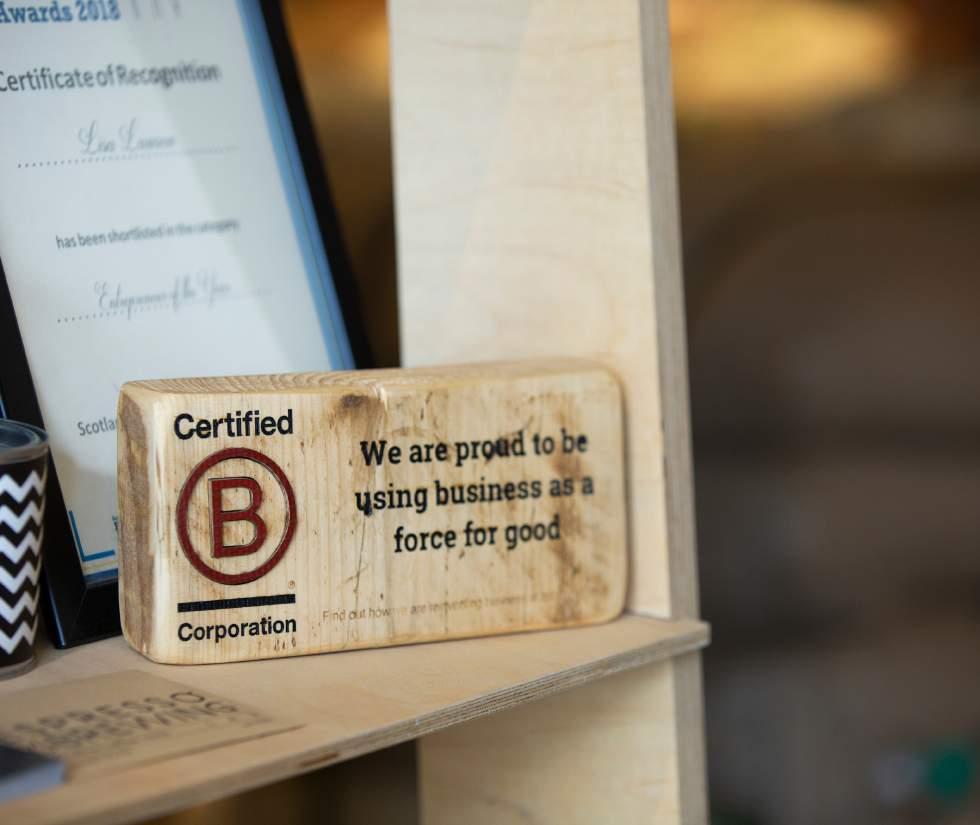
We're all about delicious, quality coffee and excellent customer service but we keep it real with solid ethical practices.

We started off on such a tight budget that all of our equipment was second-hand which we still maintain and use daily. As we've grown we have invested in the newest of equipment with energy efficiencies. Our packaging is biodegradable and if you're a wholesale customer we supply bulk coffee in reusable buckets with vacuum lids to ensure an airtight seal and absolute freshness along with a sound environmental solution. We don't have all of the answers but we ask all of the questions and have adapted our processes along our journey to find the best solutions available to us to supply with minimum carbon output.
You'll find all the buzz words here! Ethical. Sustainable. Traceable. Speciality. We can definitely tick all of these boxes and more. Not only are we committed to always having direct trade links and to personally visiting the coffee origins to form and maintain relationships with importers and producers, but we also look after the other side of our supply chain by being SALSA accredited ensuring a 'food safe' and fully traceable product with the audits and record-keeping to justify the hashtags! And if that third-party audit isn't good enough we are also proudly a certified B Corp ensuring we are held accountable for all of our business practices and giving us a framework to be even better in all we do.
Gaining B Corp certification is one of our proudest moments at Dear Green. To have the ethical standards which are intrinsically in the culture of the company audited and verified to be of the highest standard is incredible. Having a template to improve on what we already have in place is an exciting prospect for us.
We’re also super proud to have recently signed up for World Coffee Research’s Checkoff Program. At Dear Green we’re always looking for ways to support our industry and our community whilst also learning as much as we can about coffee. We’ve always been inspired by the work of World Coffee Research and we’re delighted
that we have now formalised our contribution to the great projects that they are advancing for the benefit of coffee sustainability. We’re continually working to make a positive impact on the planet and produce delicious, speciality coffee that doesn’t cost the earth. Shop https://www.deargreencoffee.com/ GainingBCorp


Being based in the Granite City provides so many options in which to capture moments in time. From the great Cairngorm mountains to the sea, I, Elliott, have been exploring this region further since Covid-19 broke out and I am now getting back out hillwalking and roadtripping to all of Scotland’s wildernesses.

At least this is what I do between studying International Business Management and working.
Connecting with nature takes me to a whole new planet without having to leave the ground and taking a moment to capture it all is pretty special. Each shot tells a tale, it is personal yet universal with the aim to provide the most unique storytelling experience.
Combine a hike and a road trip and you achieve what can only be described as heaven. The mountains are intoxicating, one hike
leaves you wanting more, and we are not short of them either. On my last trip out, not only did I hike, but I camped out under the stars and then road-tripped around the North Coast.
You would be a fool to think that the “Queen of the Scottish Mountains” (Ben Loyal) would be an easy climb. A long, steep, and pathless ascent on a summer-like day in March, left me in sheer
astonishment at just how much this was the case. However, as it is with every mountain the final reward opened up at the summit. With no one else around I marvelled at a view which at that moment in time was only being seen by me. I aimed for the quickest descent possible with my goal to get some shots of this magnificent mountain at golden hour and sunset before setting up camp by Lochan Hakel. A rather windy night lay ahead which got me contemplating a potential road trip


towards Durness before heading home to Aberdeen. By dawn the wind dyed slightly though I intended to continue with my road trip and headed along the North Coast of Scotland, stopping, and jumping out the car at any potential photographic opportunity. Then the turquoise blue waters of Sango Bay caught my eye…

I walked along the sandy beach, snapping away as the waves crumbled against the amazing rock formations.The sound of the waves transfixed me, their beauty crashing down before my very eyes and yet in this moment I was at peace.
Follow @ehepworthphotography
Elliott’s is a takeaway cafe, shop and events space tucked behind Edinburgh’s leafy meadows. Opened in 2018 by food writer Jess Elliott Dennison, Elliott’s serves coffee, simple cooking and home baking.

You will also find a selection of store cupboard ingredients and kitchenware alongside Jess’s cookbooks, as well as jams and pickles, all made in house. Breakfast begins at 9 each morning and includes porridge rolls filled with soft-boiled egg, crispy coriander seed potatoes, rose harissa and herby greens, or sausage, egg, dijon mustard and lemony greens. There’s always a big bowl of seasonal fruit compote on the counter to go with strained yoghurt and hazelnut granola.

Plus soda bread that we toast and spread with salty butter and one of our homemade jams. Our weekly-changing lunch is on the counter from 12-2 each day and is often a recipe from one of Jess’s cookbooks.

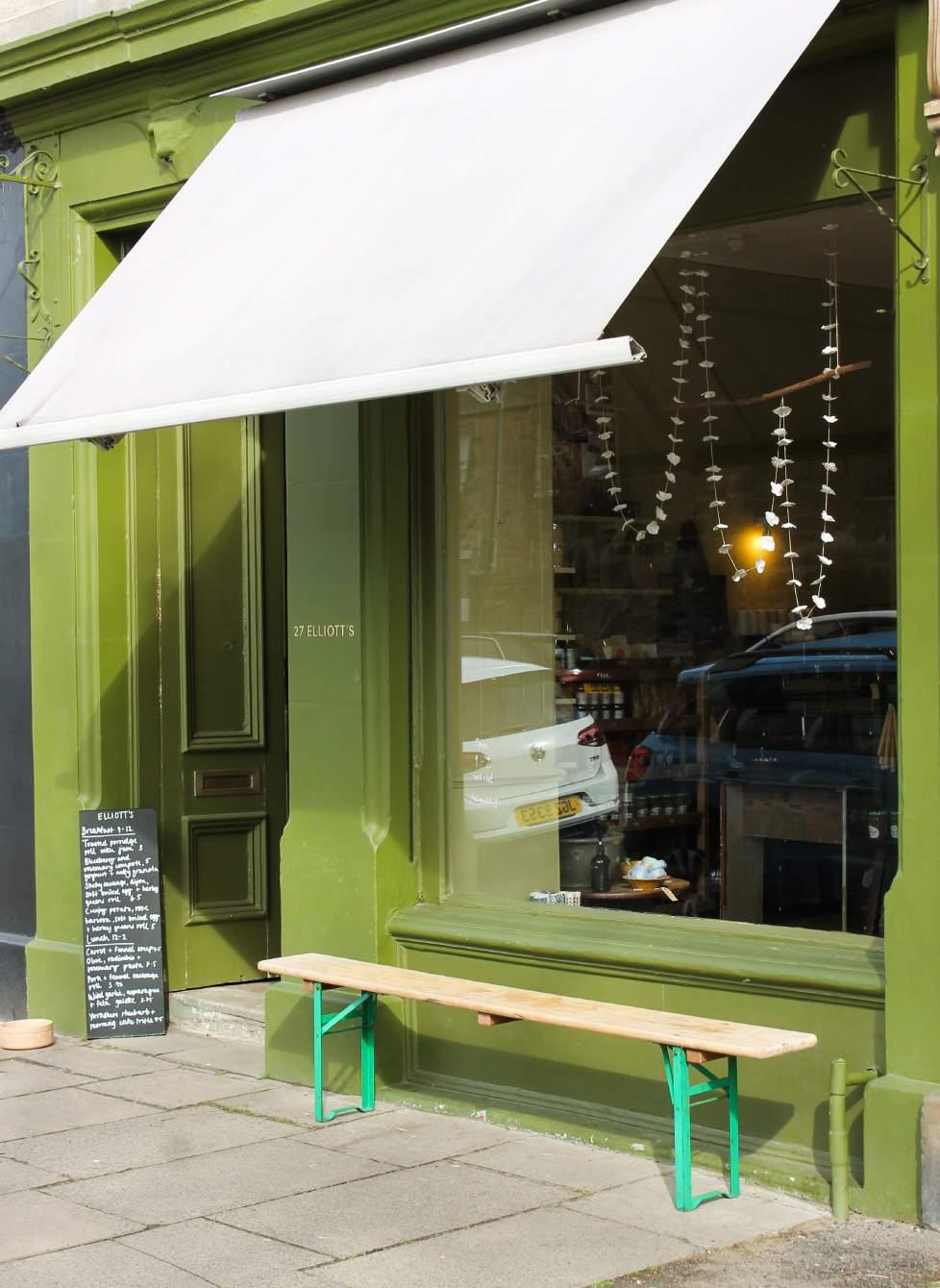
Just a few doors down from the cafe is our events space which will soon be home to a seasonal calendar of cookery demonstration and food talks, led by Jess.
Restored in 2020, this space is typical of Edinburgh’s beautiful tenement buildings. When carrying out the renovation work, we uncovered the original ceiling rose, fireplace and pine flooring. Throughout the week we use this space as our test kitchen and creative office, writing and illustrating cookbooks, writing magazine features and developing recipes and designing products.
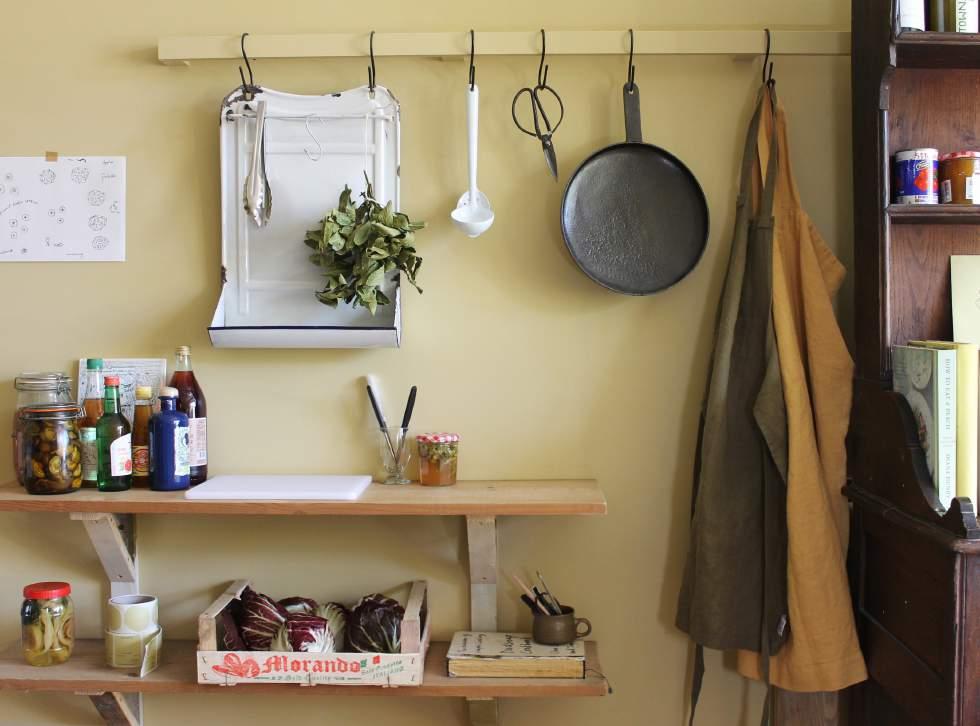
Dishes like wine-braised beans with aioli, udon noodles with Korean chicken stew, dahl with flatbreads and pickles, wild-garlic risotto with parmesan and pickled fennel. There’s always a big pot of soup available, usually a seasonal vegetable ribollita with rapeseed aioli and pasta. Plenty of homemade bread for dunking too! To go alongside coffee, we make seasonally-led cakes, cookies, biscuits and puddings.
In Spring, there’s forced-rhubarb pavlova with almonds, blood-orange upside down cake and hot cross bun pudding. In the colder months, you’ll find jam sponge puddings and crumble with custard. Our flourless chocolate cake is the cover star of Jess’s latest book, Lazy Baking, and is a regular on our counter as it has a loyal following.

Raised in East London by hungry and adventurous parents, Jess has always been obsessed with good food and simple cooking. Her route into having a food career has been self-taught and pretty unconventional. A job in marketing and product development with Jamie Oliver introduced Jess to the world of food writing and styling, leading her to write Salad Feasts and Tin Can Magic, alongside working on commercials, magazines and cookery shows. Her relaxed, everyday approach to cooking is influenced by warm childhood memories of eating with family and delicious times spent living in Bangkok, Sydney and London.
Jess opened Elliott’s as an excuse to make feeding people and having a good chat her main job, alongside writing her books Her latest title Lazy Baking was published on 30th September 2021

We invited Scott Duncan to tell us about his Scottish getaway..

Sometimes I just drive. Usually north (or more like northwest if you’re coming from where I’m from). A camera, some film, some clothes, a tent. There’s a need to get out there and hear nothing. No screeching car horns or roaring tube stations. Maybe I’m daft but I find it therapeutic driving for hours on end - I enjoy the journey.
To smell the sea. Or the trees. To get the traffic out of my lungs. But I know I'm
probably going to end up at the sea. Scotland has about 11,000 miles of coastline but the best bit is Achmelvich Beach. And it’s even light at midnight if you go at the right time of year.



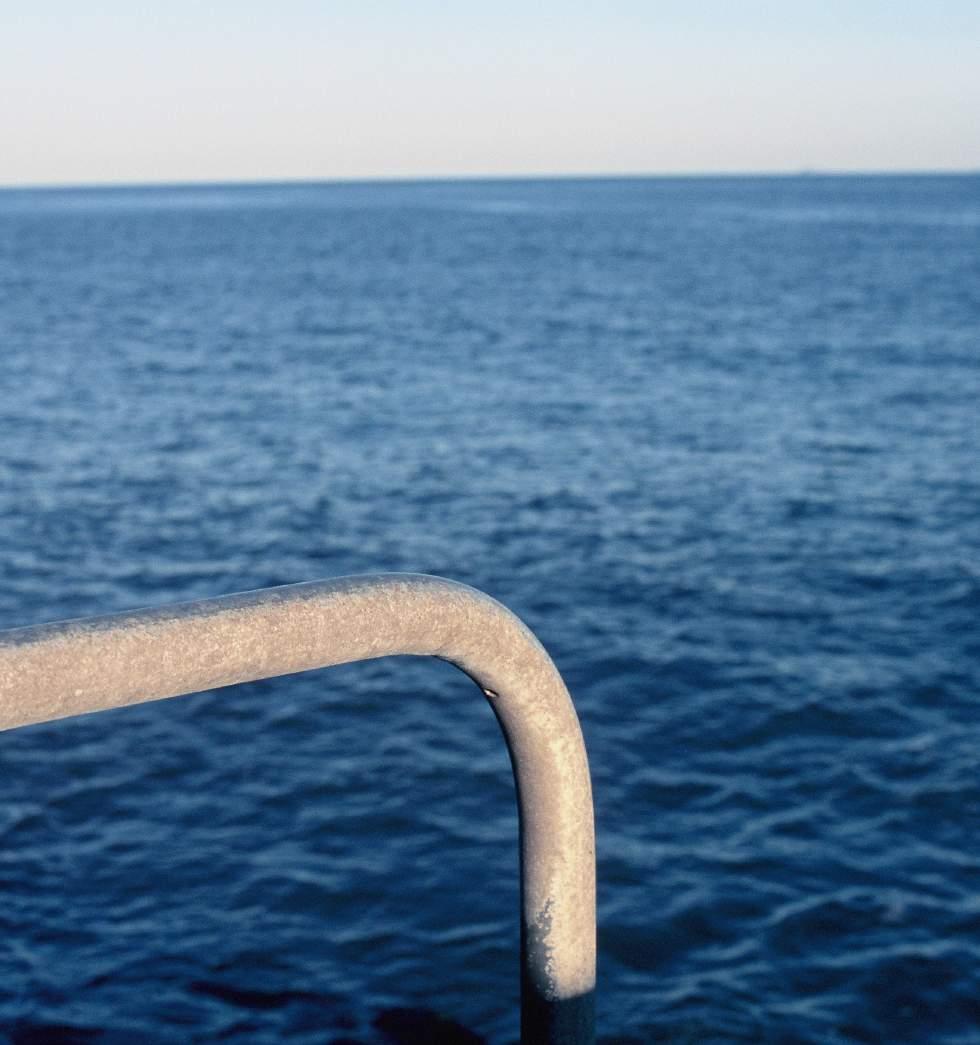
Location: Achmelvich // Achmelvich lies 3 miles north west of Lochinver, and 40 miles north of Ullapool, in the north west of the Scotland, accessed by single track road.
Scott Duncan is a fashion photographer from Fife. Currently living and working in London for clients such as Burberry, Selfridges and JW Anderson, his work is inspired by classic street and fashion photography.
scottduncanstudio.com | @scttdncn


Returning to Scotland, after living in Canada for 10 years, we were ready to embrace a new project & were looking for a property that we could convert into luxury accommodation. During a lockdown walk, we saw the properties and immediately we knew we could put our stamp on them and finally realise our long-term dreams of running our very own holiday accommodation.

 The Dundonald Guesthouse and cottage is located in Culross, Fife.
The Dundonald Guesthouse and cottage is located in Culross, Fife.
Imagecredit:MurrayOrr

We have always had a passion for travel and a love for boutique, design centric accommodation. We’d collected lots of inspiration over the years, from different accommodations and countries we have visited. We love a mix of old and new and the Dundonald represents that, vintage furniture, lighting and original artworks are dotted throughout. We are also passionate about quality and wanted to ensure that our guests enjoy ridiculously comfortable beds and linens and luxurious toiletries during their stay.


Culross is Scotland’s best-preserved 17th century village. When you arrive, you are immediately immersed in history. Our little microclimate and sheltered back courtyard is perfect for guests to enjoy a glass of wine and a good book.
thedundonald.com

SSEAMS magazine is an independent publication dedicated to celebrating the talented individuals behind the scenes of the apparel industry Thank you for taking time out to contribute to this issue. Without you, we are simply a blank page Special thanks to..

Walker Slater
6876
Jonny Mackinnon
Veske
Protected Species
Hayley McSporran
Elliott Hepworth
Scott Duncan
Paulin
dryad
Ron Dorff
Clothes Doctor
Varsity Headwear
Oswen
Deliberate Indifference
Nordic Outdoor
Seahawk Apparel
FRAHM
Land Rover
Experience Scotland
CCW
Dangerfield Mills
Dear Green
The Dundonald
Sounder
Finnieston Clothing
Yogi footwear
ELLIOTT'S
devana
For Press, contact hello@sseams.co
For Advertising partnership & sponsorship enquiries, contact Oliver Hubbard via oliver@sseams co
Tell your story, and say hello@sseams.co
SSEAMS magazine is a Scottish based independent publication celebrating apparel lifestyle, taking you behind the scenes of the clothes you wear.
Find out more via sseams co
